SIGN OF THE TIMES ASL INSTRUCTION FOR ALL
HERE COMES THE SUN SAY GOODBYE TO GAMBRELL AS YOU KNOW IT
THE NEXT BIG COVER-UP: MODEST FASHION FASHION FOR WOMEN, BY WOMEN
SKATE OF THE ART
KEEPING ROLLER RINK CULTURE ALIVE IN COLUMBIA

SUMMER 2019

STUDENT MAGAZINE OF THE UNIVERSITY OF SOUTH CAROLINA
EDITOR-IN-CHIEF
CREATIVE DIRECTOR MANAGING EDITOR
PRINT ARTICLES EDITOR Jenna Schiferl
DIGITAL MEDIA EDITOR Zoe Nicholson
STAFF WRITER Courtney Carrick
STAFF WRITER Mary-Bryant Charles
STAFF WRITER Hallie Hayes
STAFF WRITER Nicole Kitchens
STAFF WRITER Sarah Nichols
STAFF WRITER Liz Smith
STAFF WRITER Jordan Smith
STAFF WRITER Rose Steptoe
COPY CHIEF Cassidy Spencer
ART DIRECTOR Gracie Newton
STAFF DESIGNER Meredith Price
STAFF DESIGNER Emily Schoonover
STAFF DESIGNER Katie Slack
PHOTO EDITOR Alyssa Willey
ASSISTANT PHOTO EDITOR Coleman Rojahn
STAFF PHOTOGRAPHER Calandrea Hatcher
STAFF PHOTOGRAPHER Mark Maddaloni
STAFF PHOTOGRAPHER Anna Schoeck
STAFF PHOTOGRAPHER Camila Trujillo
STYLE EDITOR Caroline Hart
ASSISTANT STYLE EDITOR Jasmine White
PUBLIC RELATIONS DIRECTOR Brennan Booker
PUBLIC RELATIONS ASSISTANT Abigail Green
MULTIMEDIA DIRECTOR Steven Tapia
MULTIMEDIA STAFF Awa Dia
MULTIMEDIA STAFF Olivia Griffin
SOCIAL MEDIA COORDINATOR Frazier Bostic
SOCIAL MEDIA ASSISTANT Calandrea Hatcher
CAROLINE FAIREY GRACE STEPTOE
CHRISTIAN COMPTON
DIRECTOR OF STUDENT MEDIA
Sarah Scarborough
ASSISTANT DIRECTOR OF STUDENT MEDIA

Sydney Patterson
ADVERTISING MANAGER
Patrick DiDomenico
CREATIVE DIRECTOR
Edgar Santana
FACULTY ADVISOR
Scott Farrand
CREATIVE SERVICES
Calista Berner
Abby Meyer
Katie Slack
Emily Schoonover
Meagen Sigmon
Grace Steptoe
ADVERTISING REPRESENTATIVES
Tommy Aiken
Vincent Arceo
Jon Butto
Barron Coleman
Cal Dean
Evan Johnston
Cathryn Thompson
Ariel Whitmire
Advertising: (803) 777-3018
To contact G&B, email sagandbe@mailbox.sc.edu or visit www.gandbmagazine.com
Garnet & Black magazine is produced four times a year by students of the University of South Carolina and is distributed free to members of the university community. All editors and staff members can be contacted at (803) 777-1149. The office is located in Russell House room 339.
GB
INTERESTED IN JOINING THE G&B STAFF? EDITOR-IN-CHIEF sagandbe@mailbox.sc.edu CREATIVE DIRECTOR gandbart@gmail.com ARTICLES EDITOR gandbwriting@gmail.com DIGITAL MEDIA EDITOR gandwriting@gmail.com PHOTO EDITOR gandbphoto@gmail.com STYLE EDITOR gandbmoda@gmail.com PUBLIC RELATIONS DIRECTOR gandbpublicrelations@gmail.com WANT MORE FROM GARNET & BLACK MAGAZINE? CHECK OUT OUR NEW WEBSITE & ONLINE CONTENT: GANDBMAGAZINE.COM FACEBOOK.COM/GARNETANDBLACK TWITTER: @GARNETANDBLACK INSTAGRAM: @GARNETANDBLACK ISSUU.COM/GARNETANDBLACK
08 SIGN OF THE TIMES Adopting ASL on campus 28 45 DESERT HEART CHANGE OF WEATHER COVER PHOTO BY AWA DIA COVER ILLUSTRATION BY GRACIE NEWTON COVER DESIGN BY GRACE STEPTOE Channeling the heat with nontraditional summer looks An interview with Homemade Haircuts HERE COMES THE SUN Building a sustainable study space 12 THERESA’S SKIN Poetry by Frazier Bostic 37 THE NEXT BIG COVER-UP: MODEST FASHION Faith and fashion stitched together 14 RISING DEMOCRATS A look at the freshman class in Congress 38 RED SCARE Mediating modern McCarthyism 19 FLOODPLAINS AND FIREFLIES South Carolina’s only national park 40 THE SUPPER TABLE South Carolina’s powerhouse women 21 SKATE OF THE ART FULL STEAM AHEAD The roller rink renaissance How STEM students can benefit from the arts 24 43 Contents Garnet & Black Magazine Summer 2019



TO GARNET & BLACK MAGAZINE IS SEEKING STAFF FOR FALL 2019! VISIT GANDBMAGAZINE.COM TO APPLY! WRITERS DESIGNERS ILLUSTRATORS
EDITORS
MEDIA SPECIALISTS
PHOTOGRAPHERS COPY
VIDEOGRAPHERS SOCIAL
STYLISTS
Letter from the Editor
EDITOR-IN-CHIEF CAROLINE FAIREY
HERE WE ARE. On the steps of the Longstreet Theatre, shivering slightly, trying to keep our eyes open for the photo in three, two, one – here is Garnet & Black’s masthead for 2018-2019.
Not everyone could make this photo – Steven, Zoe, Jasmine, Hallie, and many members of our editorial and photo staff couldn’t make it. So many individuals not pictured here helped build the magazine you’re holding, the brand associated with it and the community on campus known as Garnet & Black Magazine. But so many of them are pictured here, all together, for one of the last times. To all of you who create and care – this last issue of the year is dedicated to you.

Over the last three issues, Grace and I had many late-night conversations after our weekly masthead meeting about what we might do if only we had the luxury of calling Garnet & Black our full-time job. As students, we feel tugged in several thousand different directions by classwork, internships, side-jobs, networking, socializing, and somewhere in all of it finding the time to eat and sleep and think about the future.
Contrary to what the college environment and capitalist job market try to tell us, we are not just the sum of what we have done. Each person on this staff will put their position on their resume, knowing that it can never fully encompass the late nights spent, the creative energy exhausted and the relationships built while working on this magazine.
What we have created this year, together, supersedes all of us as individuals. I think that we, as a staff, were momentous – in the etymological sense of the word, compounding “importance” with “moment,” knowing that we were just as temporal as we were brilliant. In five, 10, 30 years, we will be able to look back on the work we’ve done this year with pride, knowing that we told the right stories well, valued beauty, and planted strong and steadfast seeds for future mastheads to water. And for that, I could not be more grateful.
Grace, thank you especially for believing in me and for standing at my side this year. I remember first meeting you, leaning against the wall in the basement of Tapp’s, while everyone around us took photos, paired outfits, and generally looked busy and knowledgeable, something that we desperately wanted to be – and now we are! You have made this magazine unimaginably beautiful, and it’s been an absolute honor to lead with you.
Readers: Thank you for giving us a vibrant, engaged community to create for. We’ll be back next year – the same and different all at once, ready to continue innovating and growing anew.
the Time s
 BY SARAH NICHOLS
BY SARAH NICHOLS
AMERICAN SIGN LANGUAGE AS A FOREIGN LANGUAGE
of
• PHOTO BY MARK MADDALONI • DESIGN BY MEREDITH PRICE
It is the third most used language in the United States. It has its own grammar structure, vocabulary, unique culture and history. It has its own idioms, poetry, dialects and slang. Many universities and public schools these days recognize American Sign Language as a foreign language, but not yet the state or University of South Carolina. Why is this?

Many people – especially those who can hear – might reach the easy conclusion: Well, ASL isn’t foreign, it’s American. This might seem simple enough to accept if you haven’t spent time studying the language or meeting the community.
The Google definition of “foreign” is “of, from, in, or characteristic of a country or language other than one’s own.” By definition, ASL would already meet this requirement, being a different language from English.
But to break it down more: American Sign Language (ASL) is a visual/gestural language rather than an aural/oral one, but that doesn’t mean it is lacking in complexity, grammar and/or culture. There are hundreds of naturally occurring signed languages throughout the world, although this one is distinct to America and Canada. It is derived from French Sign Language, and therefore much more similar to FSL than it is to British Sign Language.
Kate Karpus, a third-year sociology student, first began learning ASL as a homeschooled high-schooler, where it counted as an elective.
When she saw it was offered at the university, she wanted to continue her studies, but had trouble fitting it into her schedule. Because it doesn’t fulfill any requirement, she had to wait until more space opened up in her schedule to fit it in. USC only offers one section per semester, offered through the night school as opposed to the Department of Languages and Literatures. The class caps at 22 students and fills up almost immediately as registration opens each semester.
Full disclosure: I was in this same situation, and I had to wait until my secondto-last semester of college to get into the ASL class. Karpus had to get an administrator to override the class cap in order for her to get in.
It was this process of registration as well as conversations with our professor, Andrea Martinez-Johnson, and people in the deaf community, that inspired Karpus to take up advocating for ASL to be counted as a foreign language at USC. While Karpus, a hearing person, does not wish to be the spokesperson for a culture she does not directly belong to, she does want to bridge the gap and facilitate the conversations between the decision-makers and the deaf community. From there, she hopes that the deaf community will be able to speak up for themselves and have their input respected. As a student at the university and a student of ASL, she felt she was in a unique position to advocate for the cause.
“I’ve talked to lots of people in lots of different departments, and they’ve all kind of given me different reasons for why it doesn’t count, which is interesting, because then I’ll tell other departments what the initial
SIGN OF THE TIMES 9
departments have told me and they’re like, ‘No, that’s not the reason.’” Karpus said. “The first lady I talked to said it didn’t count because it was English – very not true. ASL is completely different in sentence structure. It’s actually based on French, so that was something I was trying to work through with her.”
There are forms of signing that are a direct translation of English, such as Signed Exact English and Pidgin Signed Language. However, these are not taught at USC; ASL is.
“[The administrator’s] exact words were, ‘It doesn’t count because it’s English.’ And my immediate thought was: I’m going to go in there and sign something, and since it’s English, you should be able to understand it,” Karpus said.
Currently there are at least 196 colleges and universities that offer or accept ASL for a foreign language credit. Within South Carolina alone, Anderson University, Clemson University, Converse College, North Greenville College and USC Upstate all offer ASL as a foreign language.
Clemson University also participates in a program that helps deaf students transition and settle into college with ease, and they provide a minor and interpreter program for ASL.
“There is a high probability that social workers, psychologists, nurses, doctors and others in the helping profession will encounter a deaf client or patient in their work. It would stand to reason that USC should offer it, same as most major universities,” Sherry Williams said. Williams is the president of the SC Association of the Deaf and an ASL teacher at Converse and Spartanburg Community College.
After having several run-around conversations, Karpus was directed to the Department of Languages and Literatures –the department that would actually have to adopt ASL before it could be considered as a foreign language credit or Carolina Core requirement.
Because of Karpus’ proposal, the department is currently considering adopting ASL – although no promises have been made at this time. While the department declined to give an official comment, they did say that conversations are being had within the department and that the idea is being taken seriously. However, such processes are slow-moving.
“I understand it’s a complicated process –I think,” Karpus said. “But it doesn’t seem like it should be incredibly complex in the way that they’re saying it should be.”
One counterpoint Karpus received from the department was that the purpose of the Carolina Core foreign language requirement was to get students studying abroad, going into other cultures and gaining new perspectives.
“Deaf people do have culture. And it is signed in US and Canada, so it’s not a universal language, but he was saying it was because you couldn’t travel to it. Which you can. You can immerse yourself in deaf culture. They have communities, and they do things together,” Karpus said.
Andrea Martinez-Johnson is the current ASL teacher at USC, employed through the
night school. She is a graduate of Gallaudet University, the first deaf and hard-of-hearing university in the world. She is currently also a Certified Deaf Interpreter (CDI), a teacher aide with Richland One, and the treasurer of the South Carolina Association of the Deaf.
“In the fall of 2004, I started teaching the ASL class and it was very popular,” Johnson said. “I believe that ASL should [count] as a foreign language credit. My former ASL students did make an effort to get petitions about ASL. No luck.”
At the time, Johnson was told that Spanish language interpreters were in higher demand.
“However, in the deaf community, we need more interpreters,” Johnson said. “We have a lot of deaf people use the interpreters for work, going to the doctor, interviews and more. We need the program to be setting [students] up for the Interpreter Program.”
Karpus currently plans to continue her ASL education and eventually become a certified interpreter on the side.
“It’s the third largest language in the country and a lot of hearing people don’t know it, because there’s no incentive for them to know it,” Karpus said. “My incentive was more of – I have friends who are deaf, I’ve been working with people who are deaf, I just wanted to know it so I could communicate better with them.”
Offering ASL as a foreign language credit isn’t just about recognition; it’s about providing an incentive and opportunity for the students who want to take it. Karpus argues that it also an important aspect of embracing the deaf community.
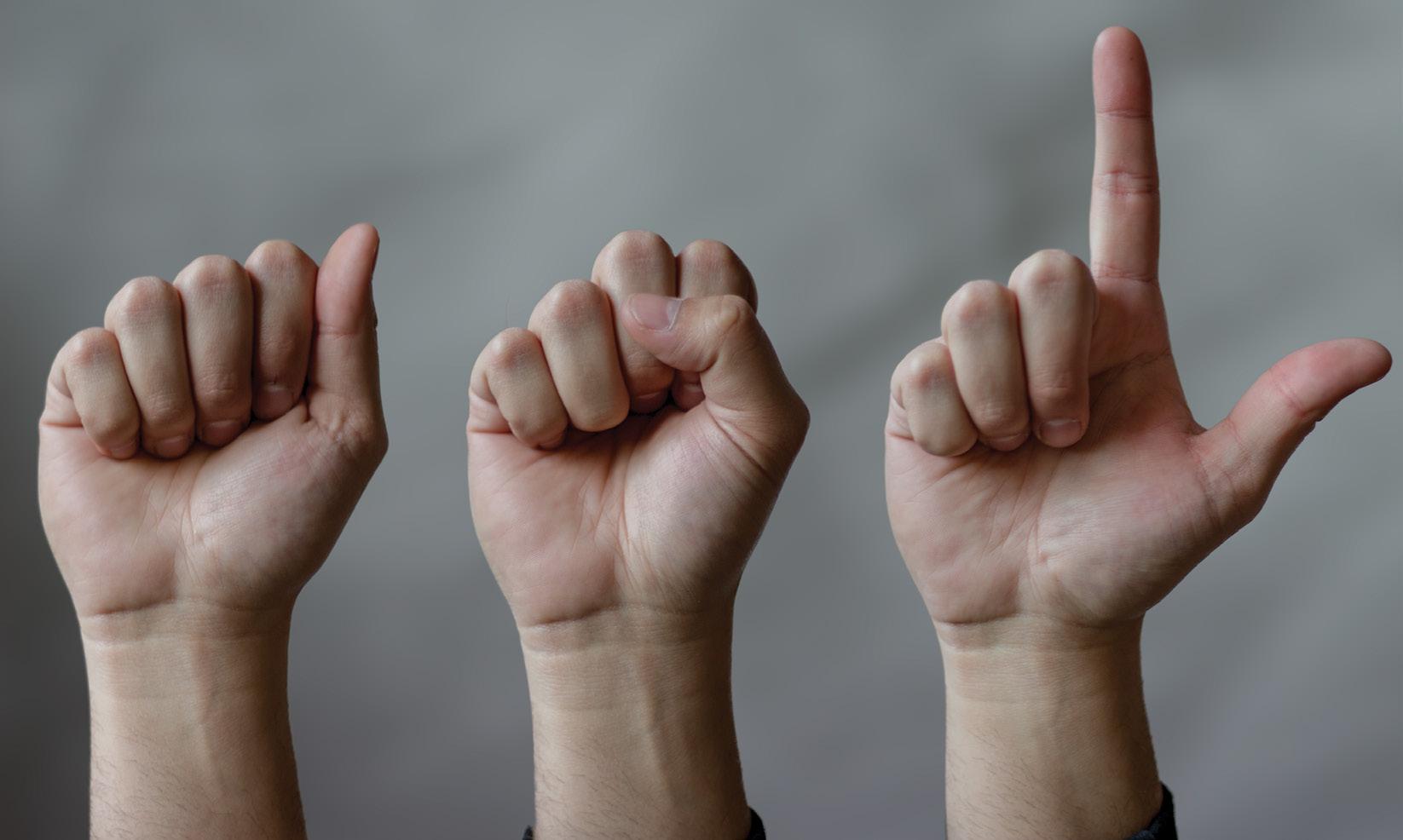
“To me, it’s also about diversity and inclusion. So, this university obviously pushes that pretty hard, and yet there’s this entire people group that we’re just excluding,” Karpus said.
And it benefits not only hearing students, the deaf community and the university, but also prospective employers and employees.
“As for me, I have been teaching ASL for almost 20 years, mostly at the college level. I think it’s a good idea for colleges to offer four semesters of ASL, to give the students a good basic foundation that they can use in their careers to communicate with their customers, clients, or patients,” Williams said.
“To me, it just doesn’t hurt anybody. I don’t understand why you would keep blocking it, because it doesn’t do any harm. It’s good to know ASL in any line of work; not only is it beneficial for the deaf community, but it also helps you get paid more, because if you know ASL, they don’t have to hire interpreters. If you’re certified, they don’t have to bring other people in and pay for them, because deaf people don’t pay for interpreters,” Karpus said. “So it just seems like more of a hassle to keep it down than it does to let it play out and become a credit. Because right now they’re paying somebody for a class that doesn’t count. This is something people want to do and it’s something people like. And you’re not going to give kids an opportunity to do it? It just doesn’t make any sense.”
On the first day of our first semester of ASL, one of the first things Johnson did was put on a YouTube video of deaf people signing along to “Waiting on the World to Change” by John Mayer. To me, the message was clear, and perfectly captured in this video and popular song; while they have never wanted or needed the affirmation of hearing people to be unapologetically themselves, they are still waiting for the change that they’ve wanted from the start. They’re not changing for the hearing world; they’re waiting for the hearing world to change.
10 SIGN OF THE TIMES
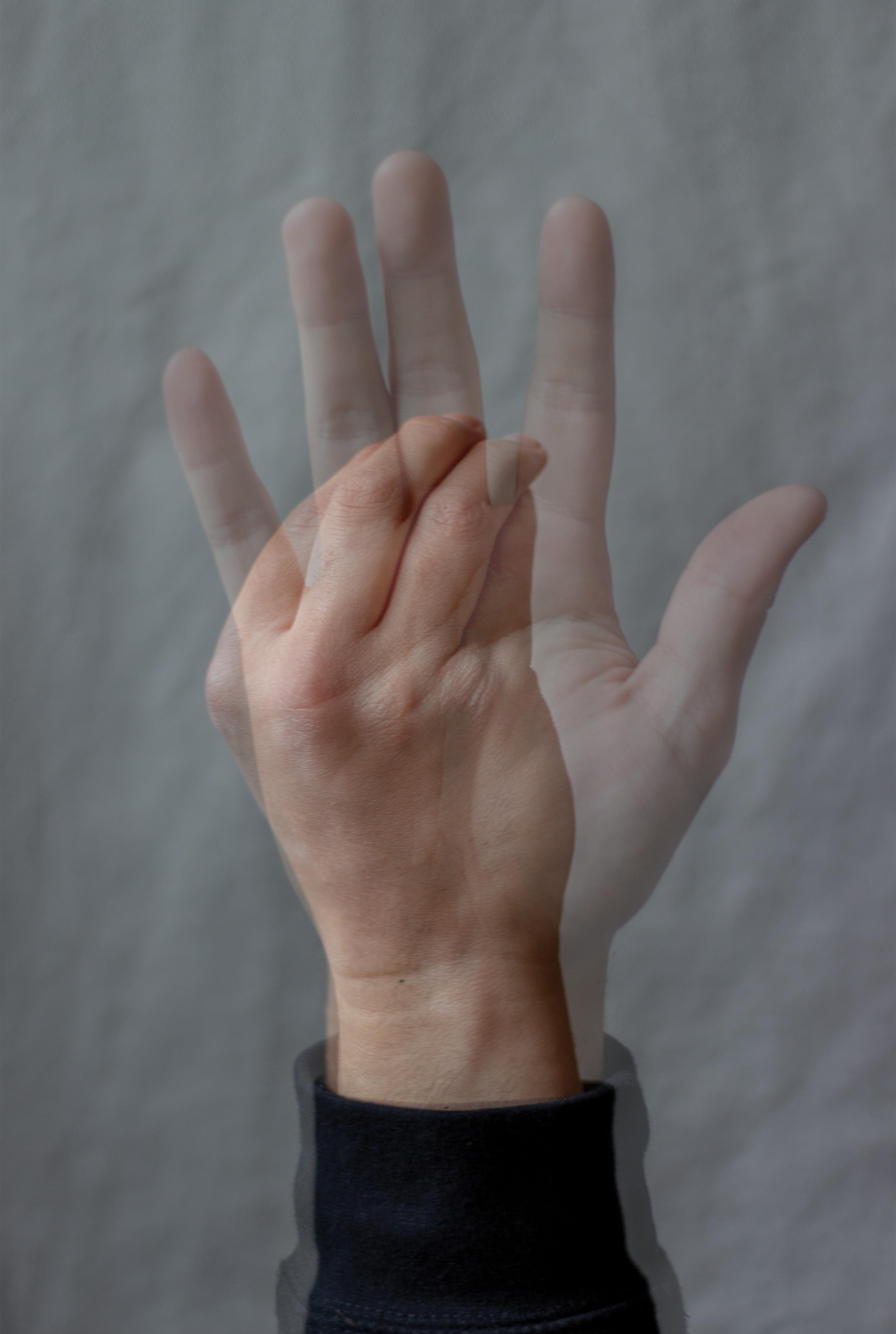
SIGN OF THE TIMES 11
“IT’S THE THIRD LARGEST LANGUAGE IN THE COUNTRY AND A LOT OF HEARING PEOPLE DON’T KNOW IT, BECAUSE THERE’S NO INCENTIVE FOR THEM TO KNOW IT.”
HERE COMES THE SUN
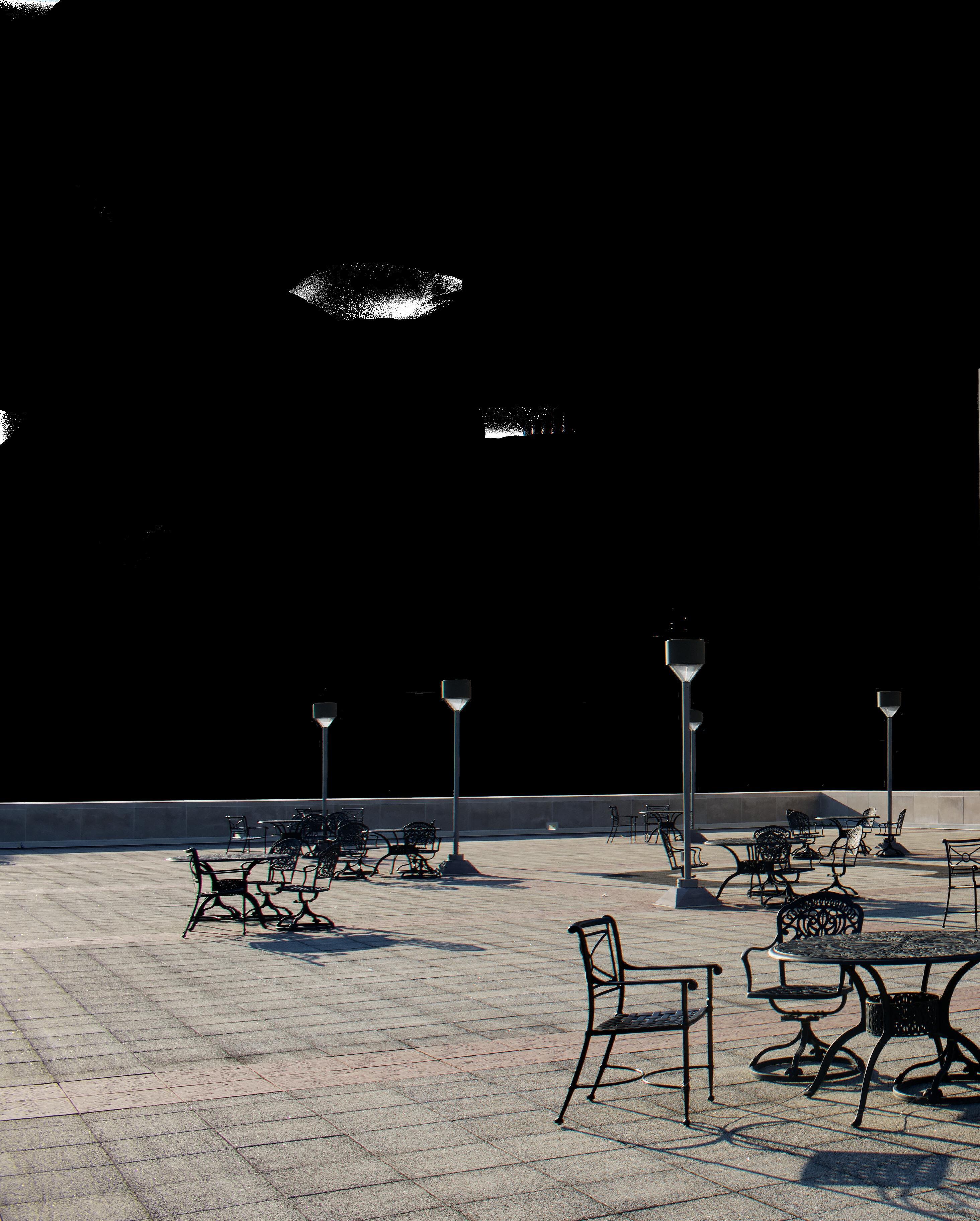

HERE COMES THE SUN 13

the next big cover-up : modest fashion
How women are walking the line between faith and fashion
 BY MARY-BRYANT CHARLES • PHOTOS BY COLEMAN ROJAHN DESIGN BY GRACIE NEWTON
BY MARY-BRYANT CHARLES • PHOTOS BY COLEMAN ROJAHN DESIGN BY GRACIE NEWTON
There’s a lot of discourse right now about how even though we’ve grown a lot more accepting of women showcasing their bodies, a lot of it still caters to the male gaze. Which is interesting in the context of the fashion world because even though most clothing is marketed towards women, the majority of working fashion designers are men.
The originators of the modest fashion movement, however, are women like Batsheva Hay of Batsheva Dresses. She founded her label looking to create a brand that catered to the desires of other Orthodox Jewish women. Her goal was produce highquality, fashionable pieces that also catered to tzniut, the principle of dress Orthodox Jewish women adhere to. Her design didn’t just appeal to Jewish people, though. Though it was conceived to serve the needs of Orthodox Jewish and Christian women, her variations on traditional styles have attracted attention from people of every sort all over the world.
There are also labels like Haute Hijab, a brand founded by former lawyer Melanie Elturk with the goal of creating hijabs she and other Muslim women could feel comfortable, proud and powerful wearing – a monumental task, as the 9/11 terrorist attacks garnered a response from the fashion industry in the form of distancing itself from anything associated with Islam. It didn’t stop Elturk from creating one of the most successful Muslim fashion labels out there, no longer limited to just hijabs. She also sells a gorgeous variety of skirts, wraps and dresses for anyone of any faith to browse.
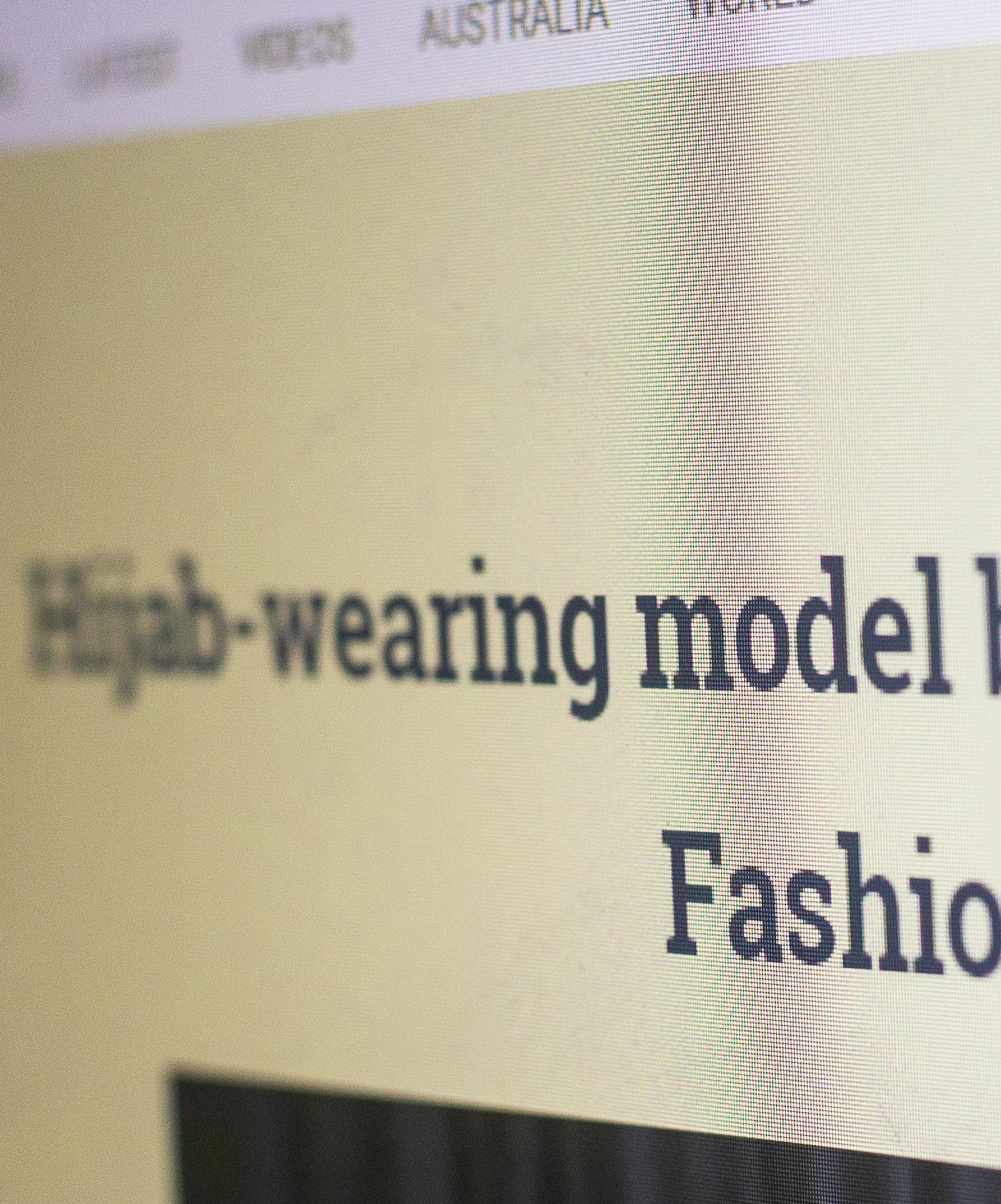
Though the roots of the modest fashion movement are in religious communities, it has appeals that apply to anyone of any faith or lack thereof. You just have to want to try it. And there are a lot of practical reasons to follow these styles and these designers. For starters, their pieces look amazing. More fabric means more room for experimentation, more patterns, more variation on traditional styles once dismissed
as the territory of the stuffy and oldfashioned.
The fact that most modest designers are women also plays a massive part in what makes this style special. Since it’s women making clothes for women, they’re taking into account lots of practical problems when it comes to clothes. The goal is to create pieces that are both beautiful and have a high degree of functionality, something a lot of mainstream designers neglect when it comes to women’s clothing. That’s right, ladies. I’m talking about pockets. Big pockets. While modest fashion has existed in some form or another for thousands of years, what makes this surge in popularity different is the way the internet comes into play. Like any fashion trend in the 2010s, it’s highly driven by a vast community of influencers. There are Instagrammers, bloggers, YouTubers and more that have garnered thousands of followers looking for new ways to explore what’s possible while also staying true to their own chosen aesthetic.
16 THE NEXT BIG COVER-UP: MODEST FASHION
The modest fashion industry has seen an explosion of growth in the current decade, blossoming from a niche market to a billion-dollar industry. But what is it? In the era of Instagram booty culture and #FreeTheNipple, the idea of women feeling the need to cover up can sound like a relic, something of the past. Sure, modest clothing for women has a long history as an oppressive tool to enforce the patriarchy. But there’s a group of designers out there trying to reclaim the practice, building and reshaping it into a medium for women’s empowerment.
For example, YouTuber Daniela Biah runs a fashion and lifestyle channel that boasts over half a million subscribers. She herself is Muslim and a lot of her content covers things like how to style a hijab and tips on living halal, but she also makes video guides giving tips on how to meet modesty guidelines in creative ways like layering and accessorizing. Another popular modest style guru, Emily Smith of the Instagram account @modestgoddess_, is a member of the Church of Jesus Christ of the Latter-day Saints. She wears what’s called a temple garment under her clothes, meaning she prefers to always stay covered. She started a blog as a way to show other women ways to work within the bounds modestly while also creating an image for themselves that they feel proud in.
Still, though, modest fashion brands, influencers and designers are often met with a lot of backlash. Modesty already often falls into the category of dowdy and uncool when it comes to mainstream standards, and
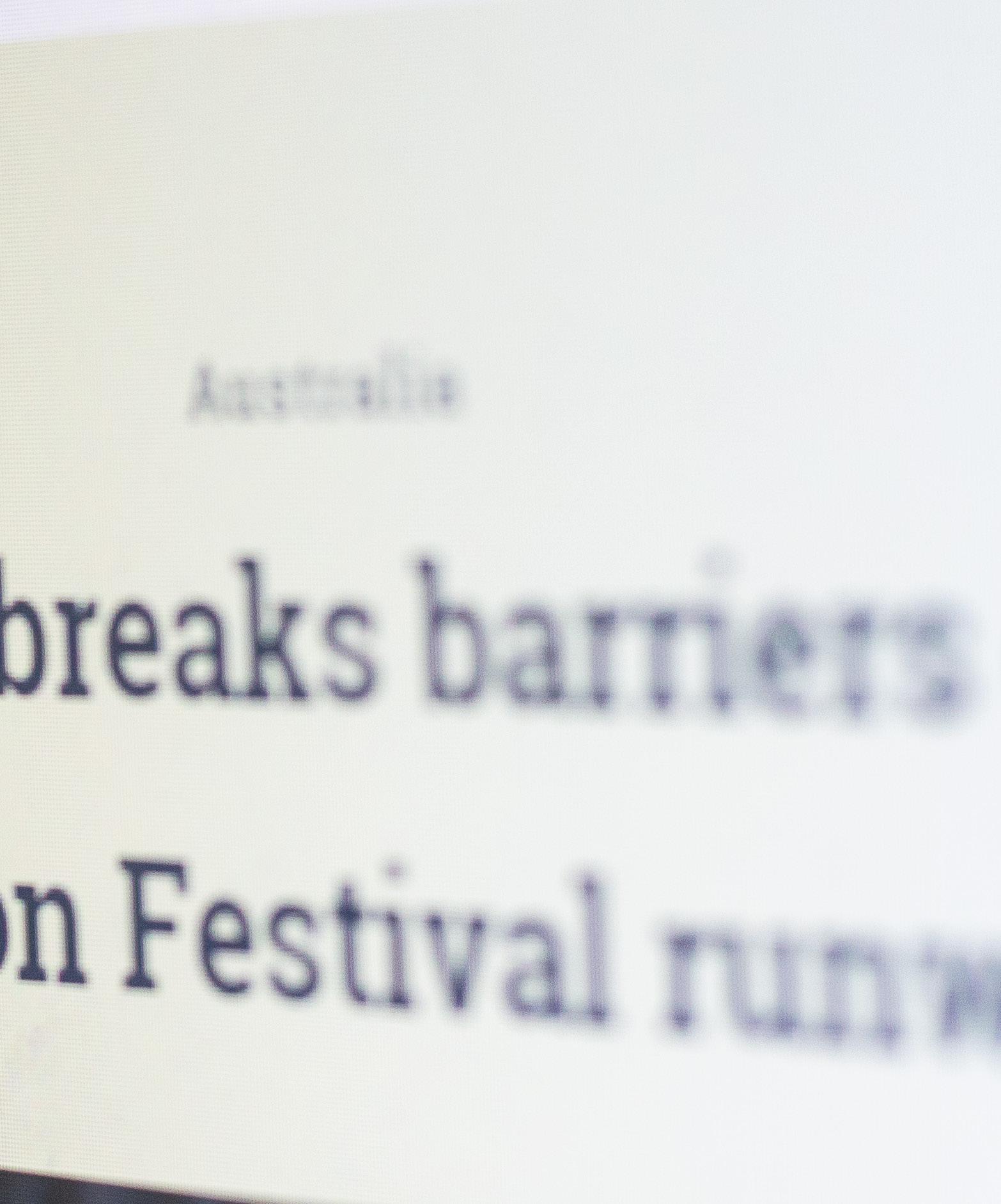
a lot of it is also fueled by Islamophobia and stigma against certain religions. It’s important to note that while modesty is something still forced upon women all over the world, that’s not the goal of people like Hay, Elturk, Biah or Smith.
The driving idea behind modest fashion is choosing modest fashion. “I know some people will think modest fashion is regressive and telling a woman to cover themselves, but I actually feel like the women it appeals to want to wear stuff that’s fun and don’t have to worry about being a sex object for a man,” Hay said in an interview with Vogue last October. For her and designers like her, this is about reclaiming the practice from those who made it oppressive. It’s about returning that agency to the women wearing the clothes. This is for them a way to express not only their style, but their beliefs, values and choice when it comes to how they show themselves to the world.
THE NEXT BIG COVER-UP: MODEST FASHION 17
“I know some people will think modest fashion is regressive and telling a woman to cover themselves, but I actually feel like the women it appeals to want to wear stuff that’s fun and don’t have to worry about being a sex object for a man.”

VALERIA, 21 The “it’s totally nobody’s business but mine” birth control. Fees for extra services requested or required are not covered by WhoopsProofSC. Valid only for students at participating colleges & universities in South Carolina thru 12/31/2019. Schedule an appointment to review your eligibility. The Implant. Now FREE or low-cost. Stop by the USC Center for Health & Well-Being or visit whoopsproofsc.org.
BY COURTNEY
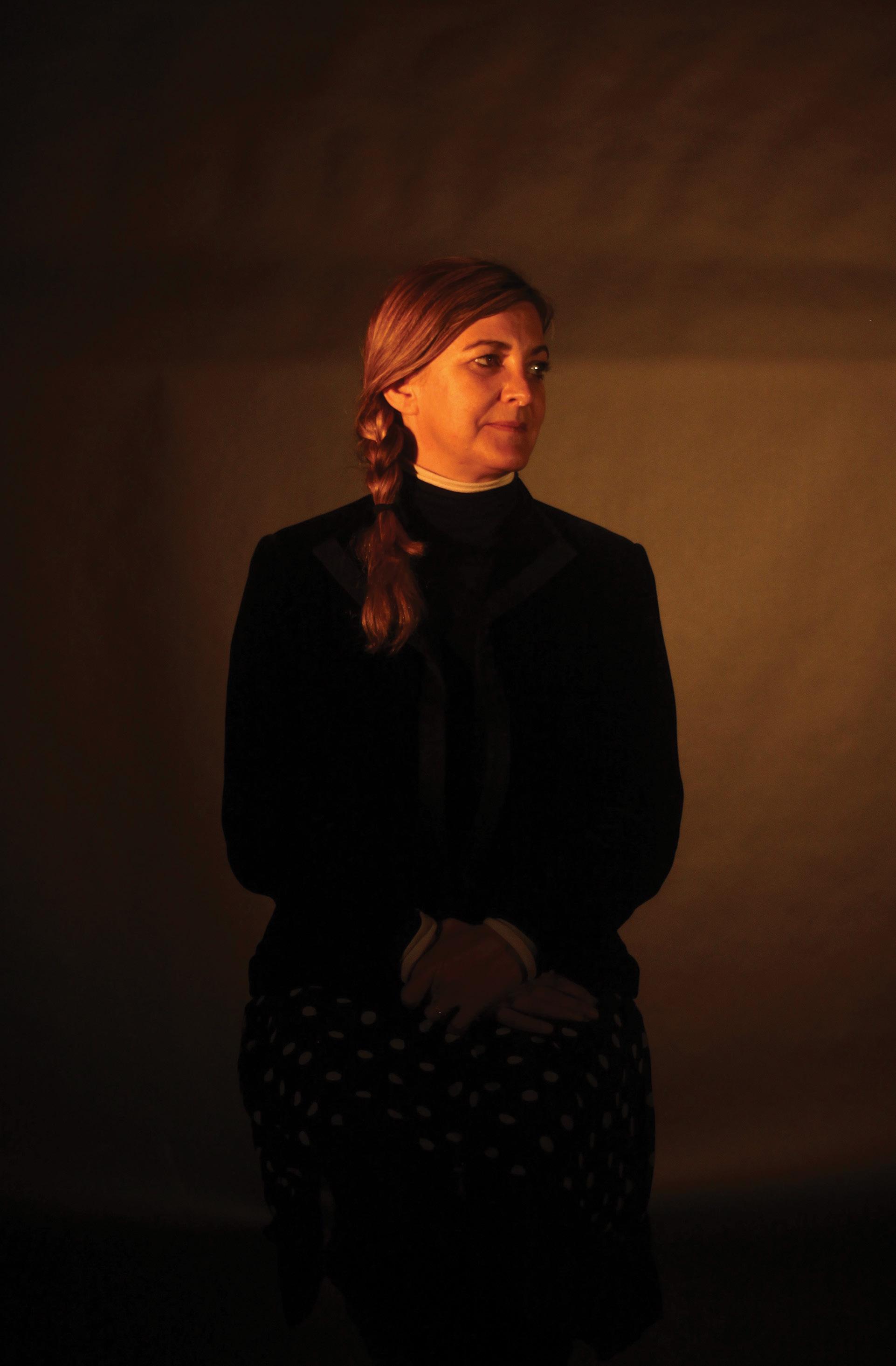
ARE
 CARRICK • PHOTO BY CALANDREA HATCHER • DESIGN BY MEREDITH PRICE
COMMUNISM AND CAPITALISM AS DIFFERENT AS WE THINK?
CARRICK • PHOTO BY CALANDREA HATCHER • DESIGN BY MEREDITH PRICE
COMMUNISM AND CAPITALISM AS DIFFERENT AS WE THINK?
magine this: You live in a small town. You’re one of the wealthier individuals within the area. You own a three-story building where you house your family. There is a change in politics and the authorities take the building from you. You are moved with your wife and three children to live in a home shared by another family. The building you once owned and called home is now property of the government and has been turned into a co-op.
For most Americans, the idea of this elicits anger or fear. But for University of South Carolina professor Dr. Melania Popa-Mabe, this was a reality when her grandfather’s property was seized following the communist revolution in Romania. Her mother was one of those three relocated children, who would later give birth to Popa-Mabe under Romania’s communist regime. Popa-Mabe, a clinical assistant professor in USC’s College of Social Work, saw the fall of communist Romania during her junior year of high school. She moved to the United States and saw the remnants of the Red Scare settle – until recently.
Since the election of Donald Trump in 2016, there has been a resurgence of McCarthyism in the United States. During the late 1940s and early 1950s – also known as the McCarthy era – conservative politicians used allegations of communist ties to control and manipulate both politics and public opinion. The same can be said regarding the current political climate, in a time of fake news and fear-mongering, modern-day McCarthyism emerged as an almost knee-jerk reaction to the growth and support behind the growing socialist movement in America. Either way, McCarthyism is a response to fear, raising the question of exactly what it is to be feared. Popa-Mabe points to indoctrination as a source of misunderstanding between political ideologies.
“There are more parallels between communism and capitalism than most realize. Under [the dictator] Ceaușescu, we were shown films that depicted the most shameful parts of America. Films that exposed us to racial discrimination and the disadvantages of affluence. We were taught that capitalists were pigs, selfish, exploitive and discriminatory,” Popa-Mabe said.
She continued to explain this is not dissimilar to the exposure Americans receive about communists. As Americans, there is an almost innate belief
that lack of individuality, controlling dictators and immense poverty are the foundation for communism. However, benefits like gender and racial equality, free and accessible education for all and collectivist camaraderie are often not considered. Popa-Mabe, who has lived in both communist and capitalist societies, emphasizes that elements of both are beneficial when implemented together, and that politicians should look to countries who already have begun to do so for guidance.
“When I think of functional socialism, I think of many of the northern countries. This is where you see a good mixture of market-economy, as well as very generous social welfare policies,” Popa-Mabe said.
Even with successful countries to cite with both socialist and capitalist policies, elements of the Red Scare persist, as evident in the change of means to obtain citizenship in America. Popa-Mabe passed her citizenship exam this past December, and even though she does not identify as a communist, she does empathize with certain beliefs.
“We are in America, you know? Free country, free speech, freedom of belief. So [while studying] I couldn’t understand why being a communist could be reason to be denied citizenship. When I went to the interview, they asked if I had ever been a part of the Communist Party. If I had been a little older [during the liberation] I would have been, just by circumstance and default. It bothered me that I couldn’t have the freedom to believe in communist or socialist beliefs in America had I chosen to,” said Popa-Mabe.
She had a point. In a country that emphasizes the importance of free thought and speech, why is there such a large and recurrent fear of what is different from our own? Popa-Mabe agrees that it is in part a lack of curiosity. She encourages others to dissect policies, question the dominant political message, look at problems critically and with analytical eyes, and recognize that communism and capitalism can work as friends – not foes. Popa-Mabe is proud to be an American citizen, but she is proud of her past too.
“You can take the girl out of the communism, but you can’t take the communism out of the girl.”
20 RED SCARE
supper table
Honoring women through art
 BY HALLIE HAYES • PHOTO COURTESY OF JASPER MAGAZINE DESIGN AND ILLUSTRATION BY GRACIE NEWTON
BY HALLIE HAYES • PHOTO COURTESY OF JASPER MAGAZINE DESIGN AND ILLUSTRATION BY GRACIE NEWTON
Art is the driving force of all things empowering and beautiful, whether we see it at first glance or through a bit of exploration and soul searching. Through art, we can honor and recognize a project that is taking place as we speak in Columbia’s local art community.
BASED ON “THE DINNER PARTY”
by Judy Chicago, “The Supper Table” is an art installation that Cindi Boiter has been dreaming up and planning for over 10 years. Boiter, who works as the executive director of the Jasper Project, a nonprofit organization that supports local artists and displays local art in Columbia, is bestowing upon us something that will never be forgotten. It is art that she, along with the artists beside her, are bringing to life.
“The Supper Table” is a collaborative art installation consisting of 12 literary artists, 12 visual artists, 12 theater artists, filmmakers, photographers, videographers, furniture artists, portrait artists and growing – and all are women. The project itself will focus on honoring and recognizing 12 prominent women from South Carolina’s history who have created stepping stones for the generations of women after them.
Christina Xan, the assistant project manager to Boiter and 1 of the 12 literary artists featured in “The Supper Table,” is aware of the importance a project like this brings to our community. It is a project of artists bringing life to history and of women honoring women.
“I hope people know that not only are we a talented and unique arts community but that we are here to empower others and not let those who history tends to forget be forgotten, whether it’s in paintings, photographs, sculptures, writing or film,” Xan says. “I hope people are also reminded of how wonderfully intersectional art is. With art, you can touch and honor anyone.”
The women involved in this project are honoring women who come from different backgrounds and experiences than their own, all privileged to recognize their specific woman in the most righteous and worthy way possible. For example, Xan will be writing on Eartha Kitt, powerhouse performer and voice for all.
“I know that as a white woman, I will never understand or be able to step into the shoes of a Black woman’s experience, no matter how much of an ally I am,” Xan says. “My hope is to tell her story in a way that is positive to her, open, honest and real – but with just the right amount of flair that Eartha would have loved.”
The project that Boiter, along with the other female artists involved, is creating is a stepping stone itself for women in South Carolina and around the world. Not only are they recognizing women who deserve it, but they are women making a difference by doing so.
Xan says she and other female artists have faced discrimination and adversity in the art community. Xan says some adversaries have even gone so far as to argue that women “can’t understand the craft.” This all-female project is taking a stand against this idea through their voice and talent.
What “The Supper Table” is doing – recognizing the women of our past – is important in recognizing the evolution that women have gone through. It is important to understand the women from our past who helped build our future. Best said by Christina Xan:
“I hope that this marks a turning point in our community’s recognition of who built the world around them. So many women went into the founding of our cities, our art, civil rights, human rights and more. Women in our past were mothers, wives and caretakers, of course, but they were also doctors, scientists, inventors, activists, artists, politicians and more. I hope when we tell the story of our state, we tell of the women who built us. I hope we never forget their names again.”
“The Supper Table” is set to debut for its opening reception on Sept. 6. From there, it will be installed at Harbison Theater. Keep your eyes and ears open for more information. This is a piece that these powerful female artists want let the world see.
22 THE SUPPER TABLE



HOW TO 23 foundersfcu.com • 1-800-845-1614 Federally insured by NCUA. Let’s get social! @foundersfcu NOT A MEMBER? VISIT RELAXJOINFOUNDERS.COM TO SEE IF YOU QUALIFY FOR MEMBERSHIP. BULLSTREET OFFICE BullStreet Neighborhood 2166 Boyce Street UNIVERSITY OF SOUTH CAROLINA OFFICE Russell House University Union 1400 Greene Street, Room 227 U KILLIAN ROAD OFFICE 80 Tulip Oak Drive (next to Applebees’s) B.A. MEMBER 12/20 GOOD THRU 4238 1234 5678 9012 3456 UNIVERSITY OF SOUTH CAROLINA DEB IT RELAXSM ... WITH FOUNDERS ONLINE. don’t forget to get your USC Debit Card.
ROLLER RINK CULTURE AND ITS HISTORICAL ROOTS

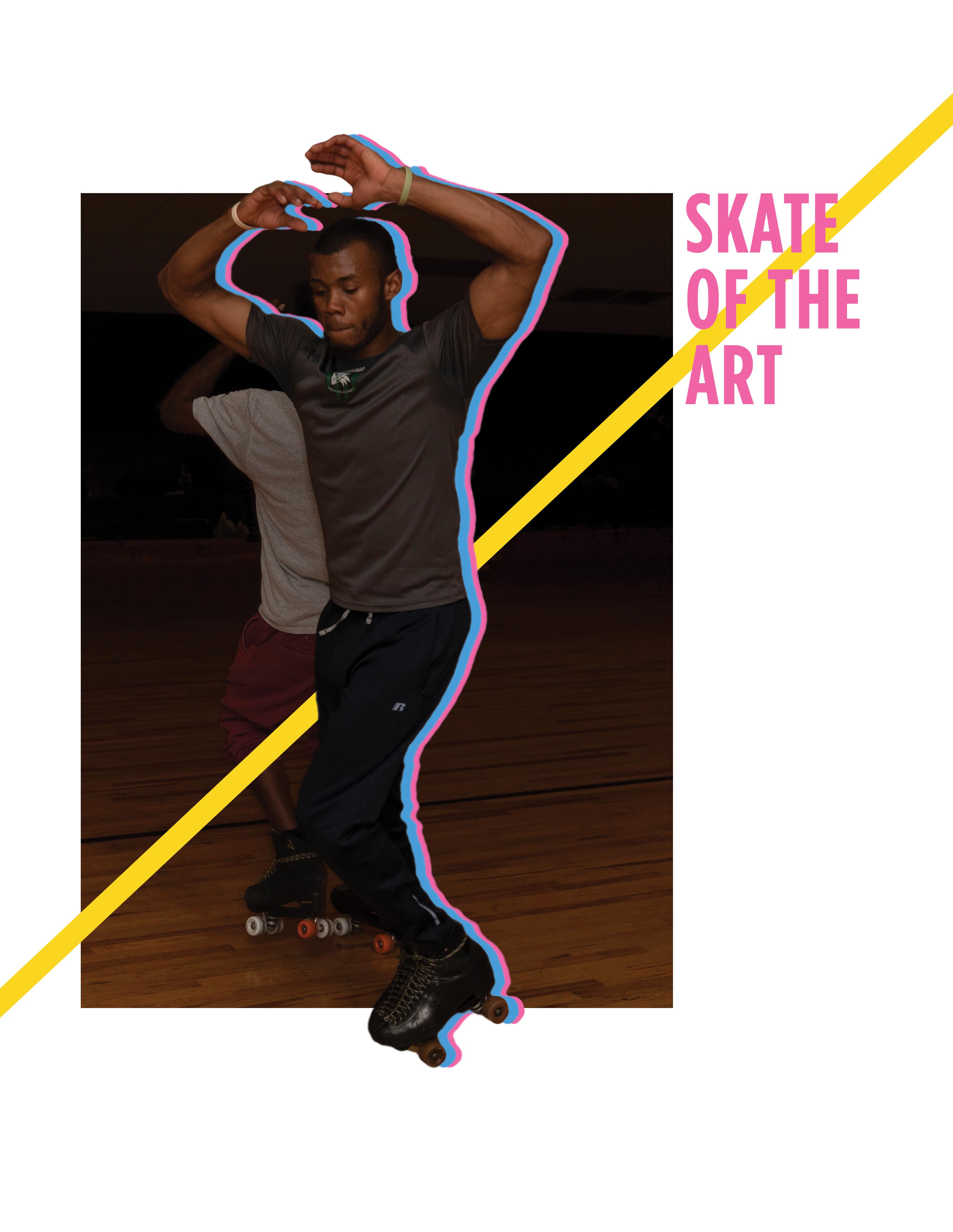 BY JENNA SCHIFERL
PHOTOS BY AWA DIA DESIGN BY EMILY SCHOONOVER
BY JENNA SCHIFERL
PHOTOS BY AWA DIA DESIGN BY EMILY SCHOONOVER
Frank Patterson steps onto the rink. He begins to skate, slowly at first. After a few minutes he picks up the pace. It’s not long until he becomes a blur. He weaves through the other skaters – in, out, in, out – in a breathless choreographed dance punctuated by the smell of stale sweat and the pulsating beat of hip-hop coming from the DJ booth.
“Once you get your wheels on the wood, everything else goes away,” Patterson, 52, says.
On a typical Sunday night, Patterson and 100 other adults fill the Three Fountains Recreation skating rink, creating a swirling oval ring of bodies and sweat. Tucked between a Dollar General and a car detail shop in West Columbia, the unassuming warehouse-style building becomes a sacred space on Sunday “adult skate” nights.
These skate nights function as a social hub and a communal gathering space for the African-American community – a subculture that has deep ties to the civil rights movement.
One of the earliest civil rights sit-ins organized by the Congress of Racial Equality occurred at a Chicago roller rink in 1949.
In the 1960s, as public spaces were required to integrate, many roller rink owners only allowed African-Americans to skate during certain nights of the week. According to HBO documentary “United Skates,” these nights had many names over the years like “gospel night” or “R&B night” but one that eventually stuck was “adult night.”
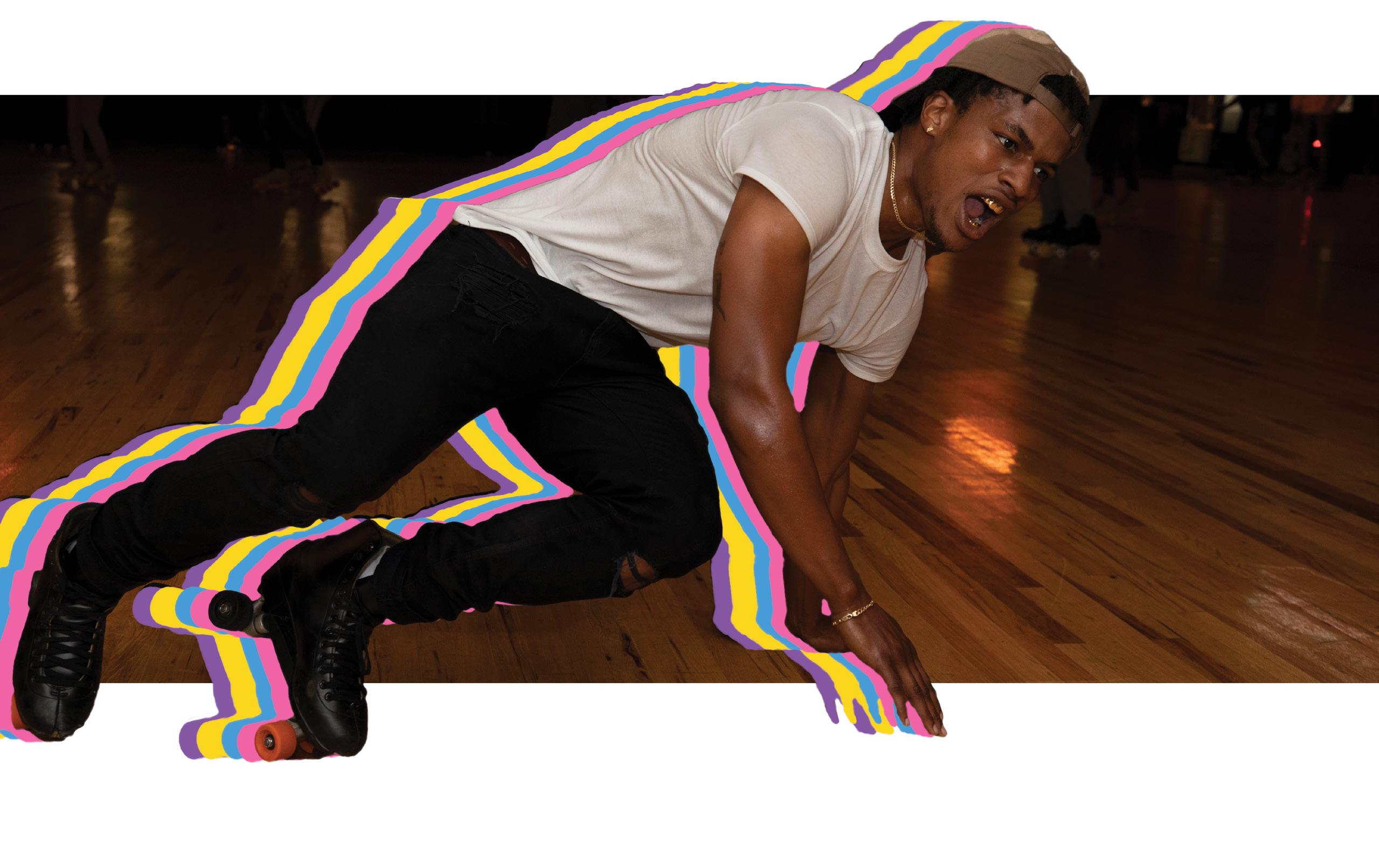
Like many others who now visit Three Fountains on Sunday nights, Patterson was a regular at Red Wing Rollerway, a rink off of Decker Boulevard. Before it closed in 2008, Red Wing was the most popular destination on Sunday nights for skating. For many, its closure was devastating. It was one of the only rinks in the state that offered adult skate.
“It was heartbreaking,” says Charles Davis, who has been skating for 19 years. “That’s a culture that’s sweeping across the nation. Skating rinks are closing all the time. We just don’t want skating to die in South Carolina. That’s why we keep coming out.”
Davis and a group of around 40 other Red Wing patrons were interested in buying the property to keep the rink alive but were ultimately unsuccessful.
“The person that was buying it, their bid was so high that

SKATE OF THE ART 25

“ONCE YOU GET YOUR WHEELS ON THE WOOD, EVERYTHING ELSE GOES AWAY.”
we couldn’t match it,” Davis said. “We’ve been exploring since then ways to come together and eventually get our own rink.”
After its closure, a group of Red Wing skaters approached the owners of Three Fountains about the possibility of starting an adult skate night.
“They didn’t have any other place to go,” says Three Fountains co-owner Steve Phillips. “We were actually the only skating rink anywhere around that would open up on Sunday night.”
“We have people coming from Florence, Charlotte, Greenville, you know, just about every Sunday night,” Phillips says. “They’ll drive all the way from there to here just for three hours.”
Cornwell “CC” Campbell drives from Hartsville to West Columbia every Sunday to skate. He previously worked as a rink guard for 20 years. He says that when he started in the early ‘90s white people only skated on Fridays and Saturdays, while AfricanAmericans only skated on Sundays.
“For the first three years, I was the only Black person in there on Friday and Saturday nights,” Campbell says.
By the late ‘90s, Campbell says that the unspoken racial barriers had mostly dissolved, but today adult skate remains predominantly African-American.

Despite Red Wing’s closing, skate culture in South Carolina has persevered. Adult nights remain popular at Three Fountains, and Davis is organizing a Red Wing reunion at the rink scheduled for this July.
“It’s a family coming together that shares a love for skating. Family and friends. And we encourage everybody else to get into it,” Patterson says. “We welcome everybody.”
“Skating is universal. Ain’t no color in skating. It’s about talent,” says Toure Clark, founder of American JamSkaters Inc. and a regular at Three Fountains. He has been skating for almost 50 years.
“You don’t need alcohol,” Clark says. “You don’t need no drugs. Because the high you get is the electricity. You come in here, the DJ provides the entertainment, and we provide the energy.”
Patterson has been skating since he was 16 years old. He tries to make it to adult skate every Sunday night.
“It’s a passion,” he says. “Once you get the music in your heart and mind, you put it on the floor.”

SKATE OF THE ART 27
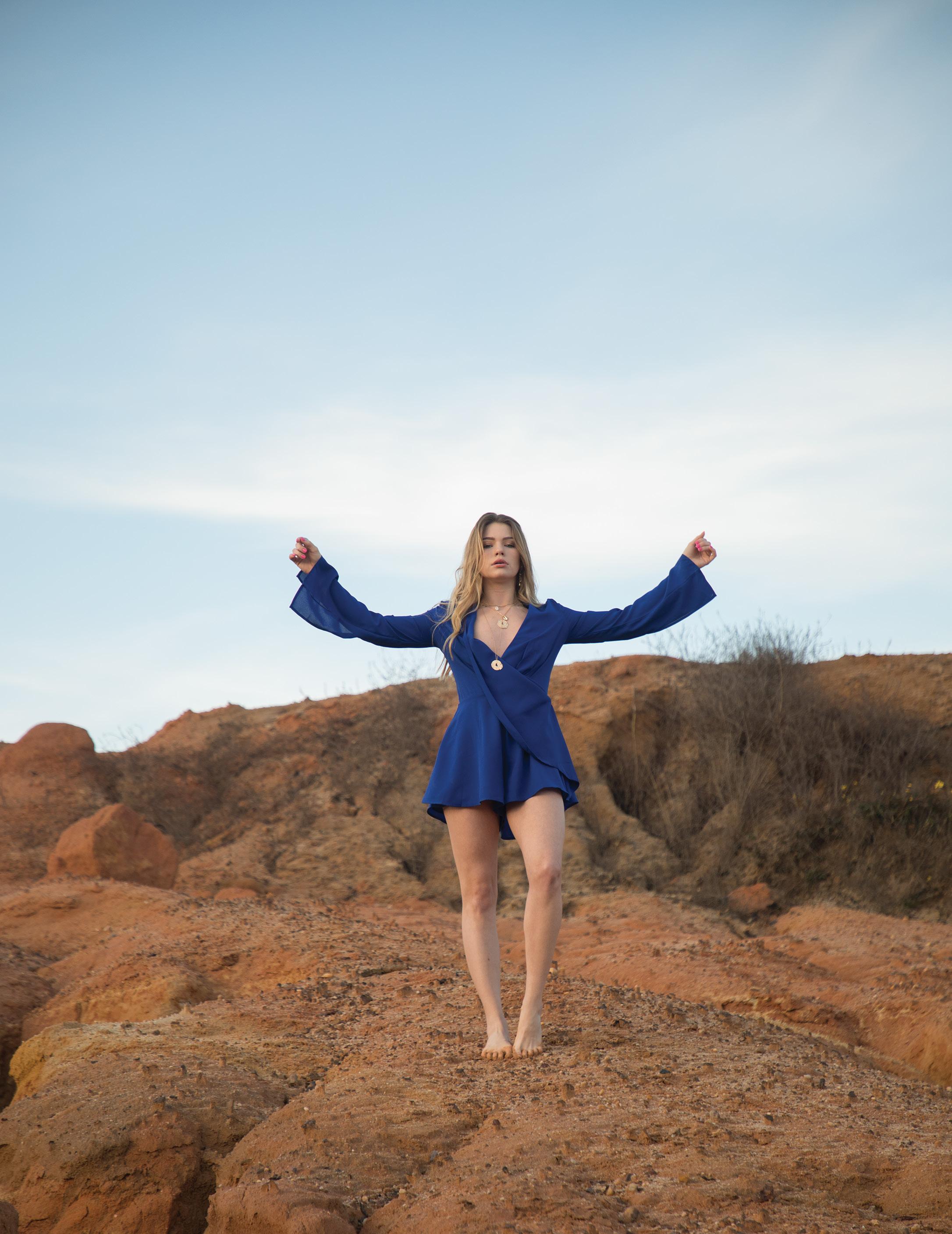 LOOK ONE: Royal Blue Romper, Fab’rik, $68 | Gold Shell Necklace, Vestique, $28 Gold Plated Necklace, Vestique, $22 | Gold Earrings, Vestique, $15
LOOK ONE: Royal Blue Romper, Fab’rik, $68 | Gold Shell Necklace, Vestique, $28 Gold Plated Necklace, Vestique, $22 | Gold Earrings, Vestique, $15
In a small quarry located not far from the busy cityscape of downtown Columbia sits a tiny desert wasteland. For this style spread, we decided to take elements from the landscape and use them to our advantage. The pigment of the blue sky sharply contrasted with burnt orange dust of the quarry’s floor, and the sequins glittered as they reflected the sun’s bright light. We wanted to challenge traditional fashion standards by layering blue on blue and wearing sequins after New Year’s Eve. This season, don’t be afraid to experiment with bright, bold colors and fresh textures or patterns to shine your brightest.
 STYLED BY CAROLINE HART • STYLE ASSISTANT: JASMINE WHITE PHOTOS BY ALYSSA WILLEY & COLEMAN ROJAHN • DESIGNED BY GRACE STEPTOE MODEL: BRITNEY ANN WILSON
STYLED BY CAROLINE HART • STYLE ASSISTANT: JASMINE WHITE PHOTOS BY ALYSSA WILLEY & COLEMAN ROJAHN • DESIGNED BY GRACE STEPTOE MODEL: BRITNEY ANN WILSON

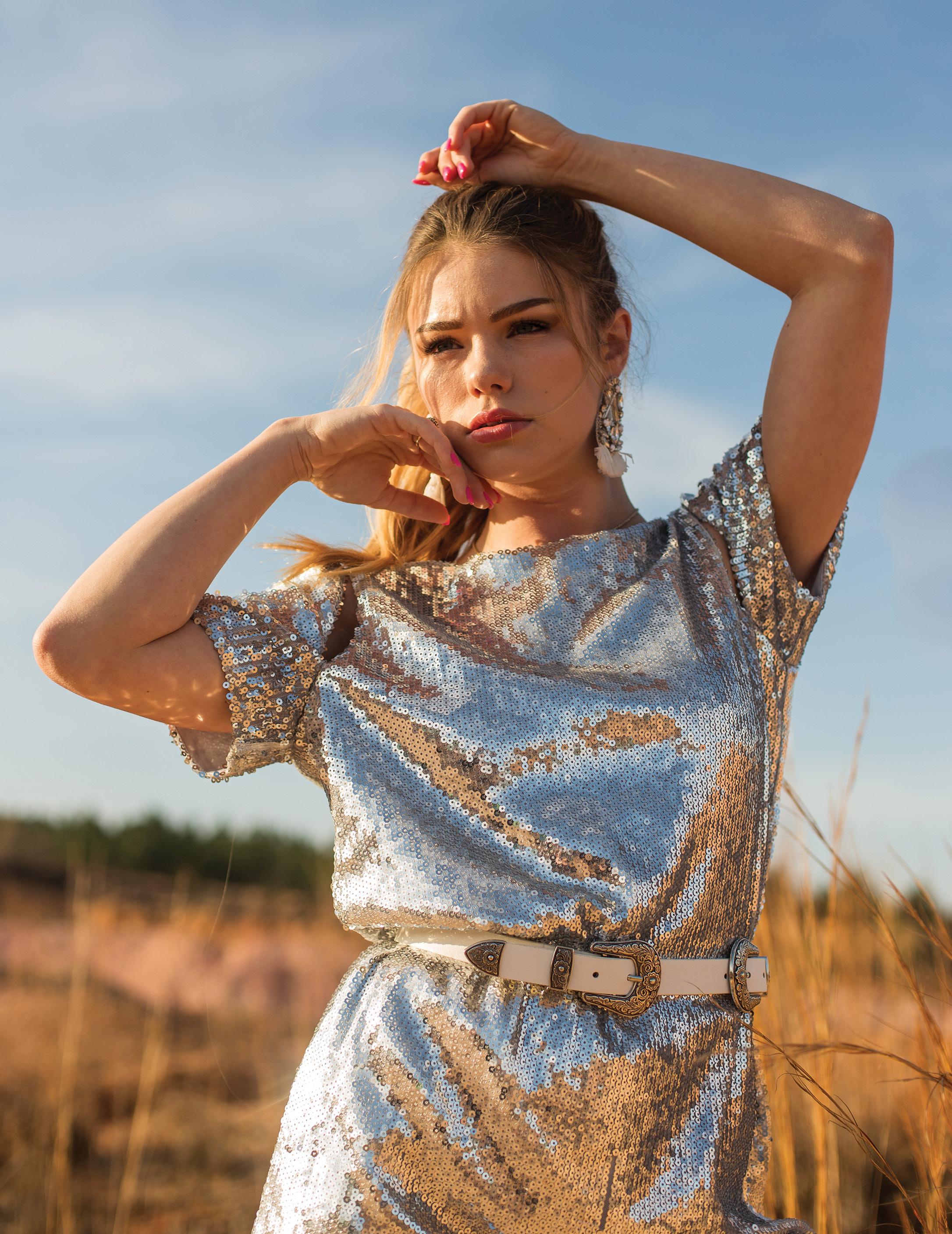
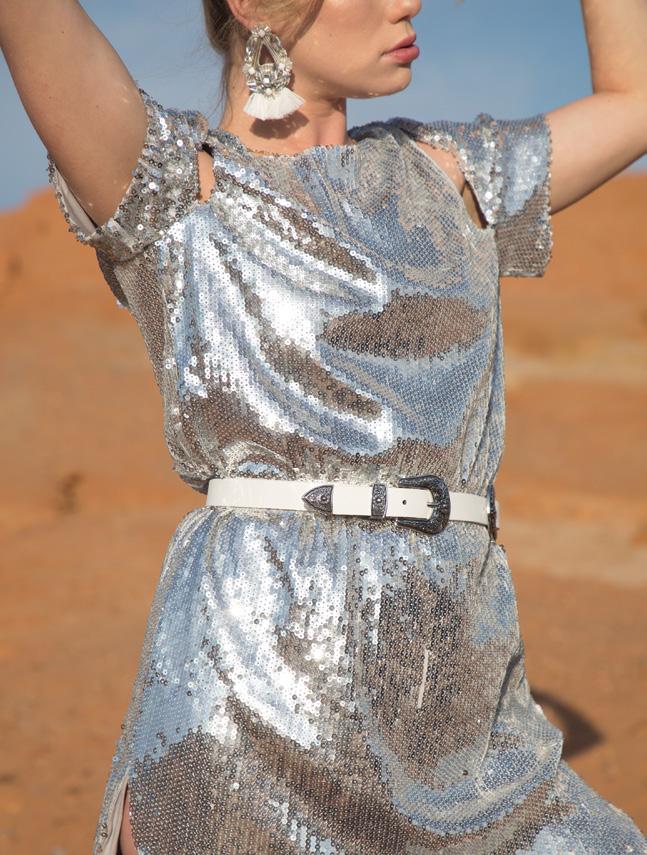
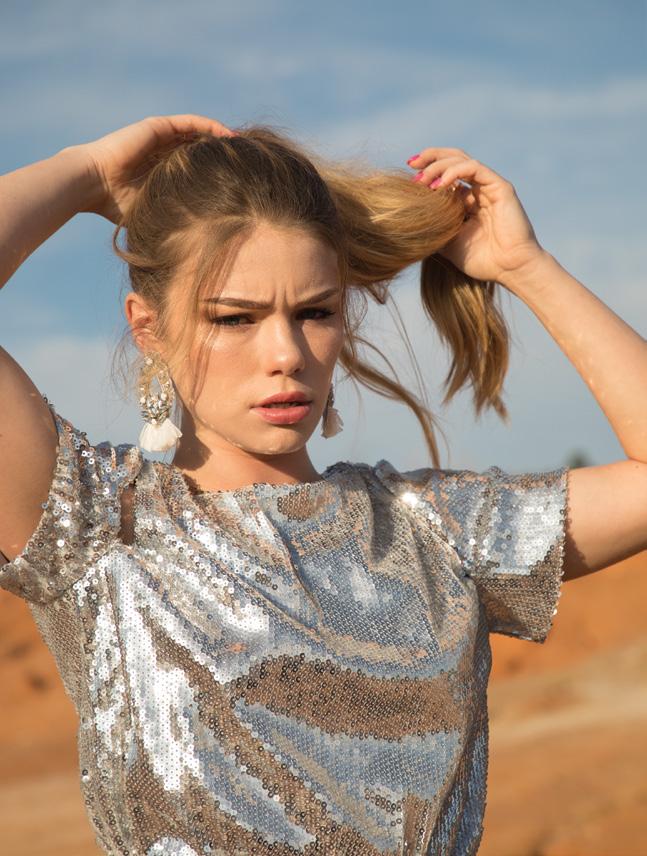

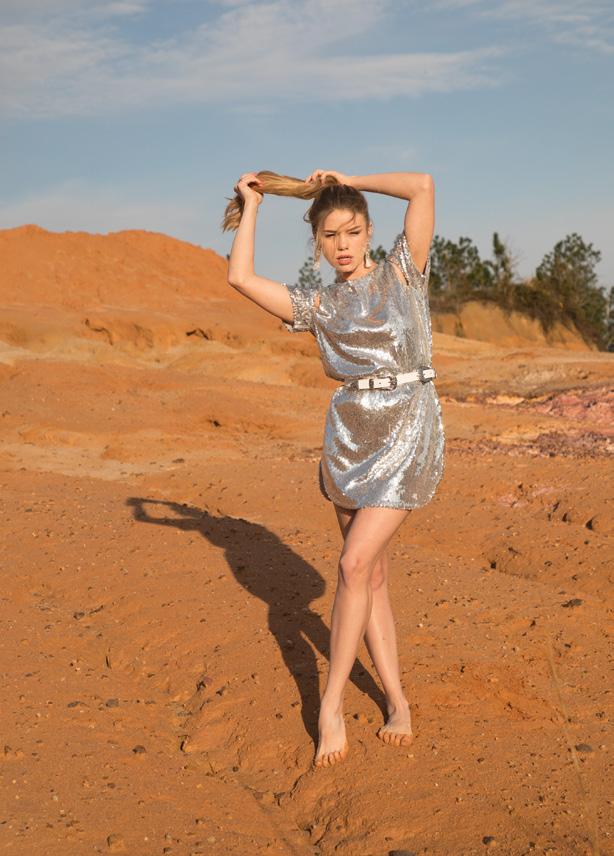 LOOK TWO: Silver Sequined Dress, Fab’rik, $68 Silver & White Earrings, Fab’rik, $32 White Western Belt, H&M
LOOK TWO: Silver Sequined Dress, Fab’rik, $68 Silver & White Earrings, Fab’rik, $32 White Western Belt, H&M

 LOOK THREE: White Eyelet Top, Wildflower, $48 | Desert Yellow Shorts, Vestique, $38 Shell Necklace, Vestique, $16 | Cheetah Diamond Earrings, Fab’rik, $18
LOOK THREE: White Eyelet Top, Wildflower, $48 | Desert Yellow Shorts, Vestique, $38 Shell Necklace, Vestique, $16 | Cheetah Diamond Earrings, Fab’rik, $18
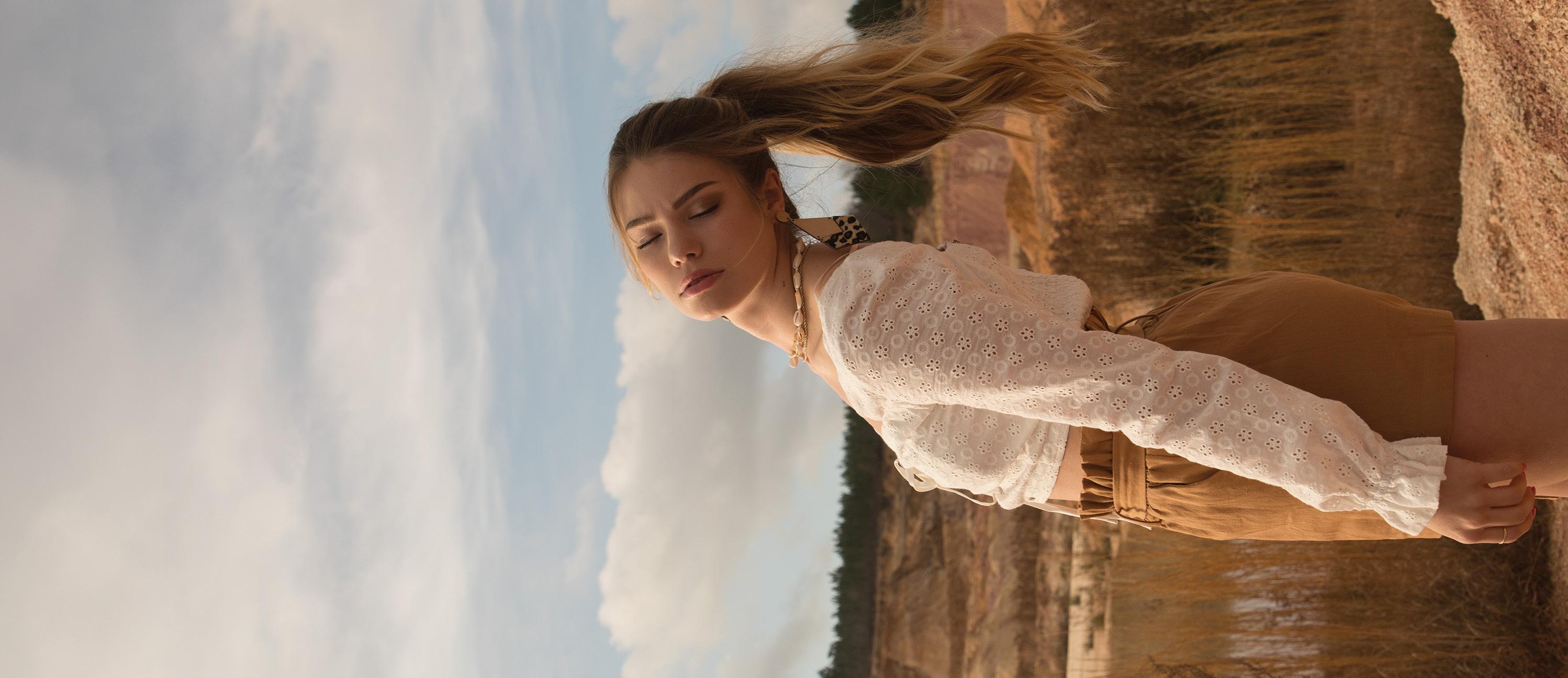
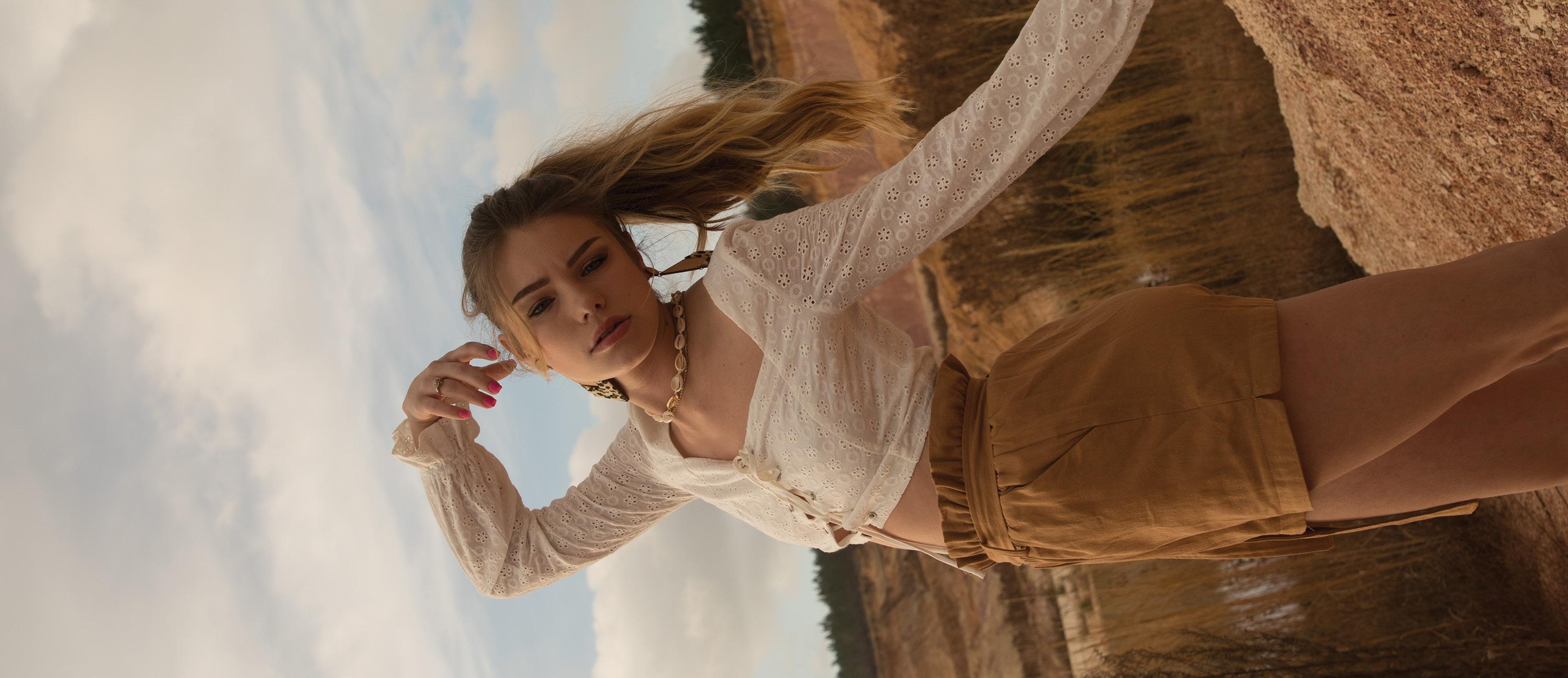
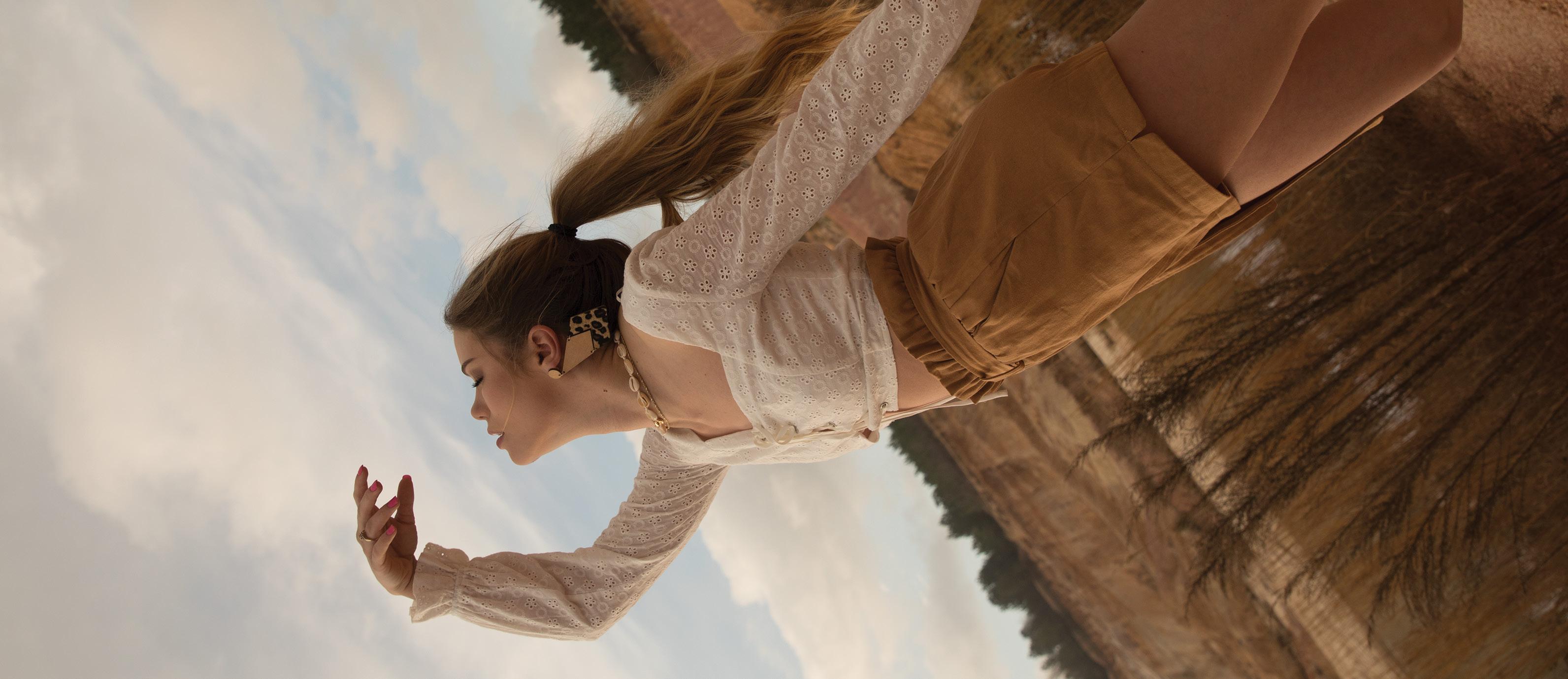

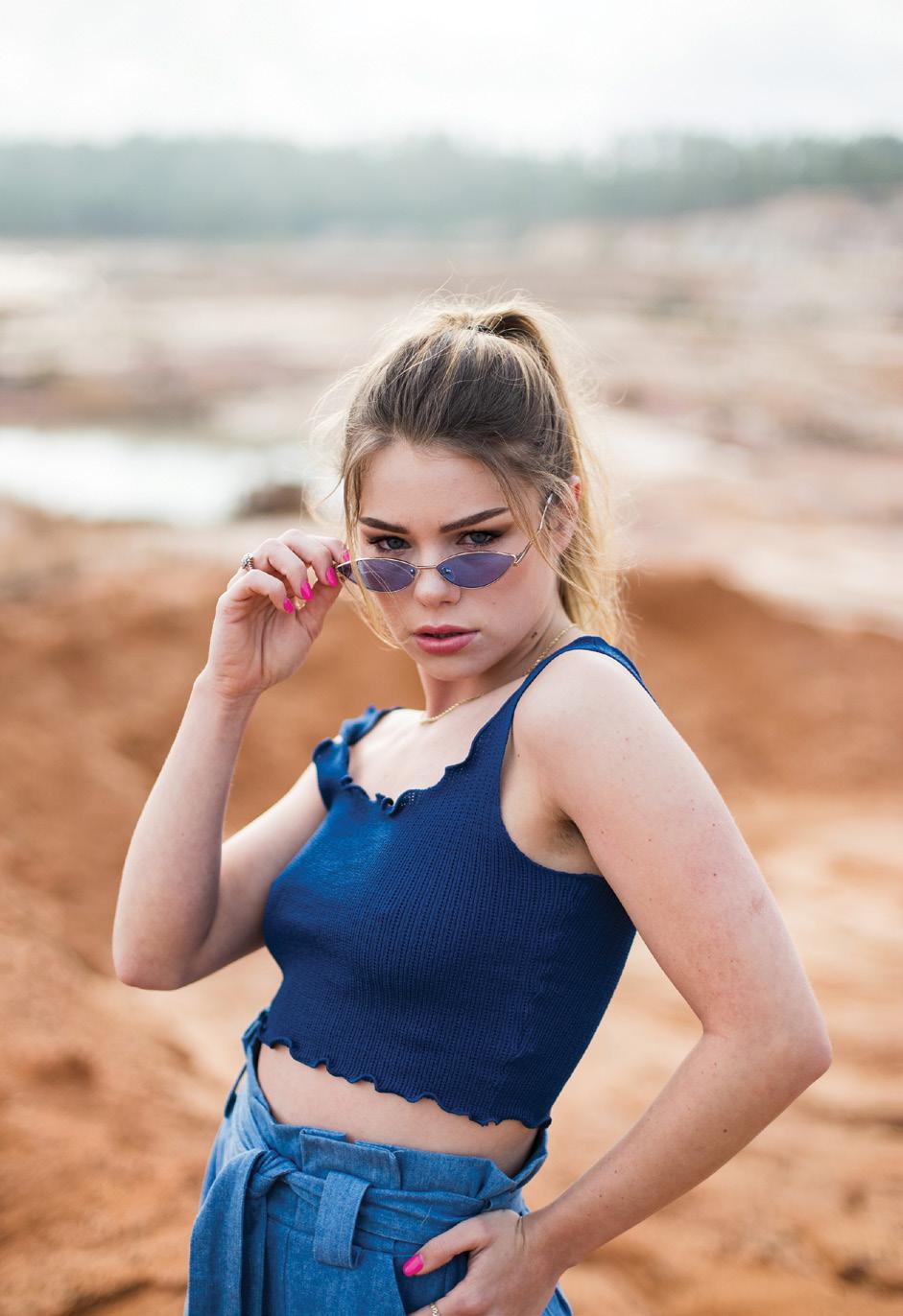
 LOOK FOUR: Blue Knit Crop Top, Vestique, $32 Wide Leg Pants, Vestique, $32 Blue Sunglasses, Wildflower, $15
LOOK FOUR: Blue Knit Crop Top, Vestique, $32 Wide Leg Pants, Vestique, $32 Blue Sunglasses, Wildflower, $15
 LOOK FIVE: White Knit Slit Dress, Fab’rik, $78 | Metallic Flower Shirt, Wildflower, $48 Silk Scarf, Wildflower, $10 | White & Gold Earrings, Fab’rik, $18
LOOK FIVE: White Knit Slit Dress, Fab’rik, $78 | Metallic Flower Shirt, Wildflower, $48 Silk Scarf, Wildflower, $10 | White & Gold Earrings, Fab’rik, $18
36 HOW TO
theresa’s skin found the welled light it limned her holy
kissed her a cool mahogany tongued her wrists

and drew her cheeks earthy sienna malt-cinnamon.
before birth, she kneaded me a piece. a small peel offering
of her laughing arms. i quartered it and quilted
a new moon, a rosy penny carnelian, a black girl.
like rain, it is thankless and gracious
and gingers my memories for generations of resemblance.
it cradles the luster of centuries flickering and wrinkling
steeping sea-sunning golden like kente
oh—momma’s skin.
by frazier bostic
RISING DEMOCRATS
BY CHRISTIAN COMPTON • DESIGN AND ILLUSTRATION BY KATIE SLACK
USC students explore the surge in support for younger, populist Democrats in Washington
The 2018 midterm elections saw several glass ceilings shattered: A record 117 women were sworn into the most diverse roster of Congresspeople ever seen before. Many of these were freshman Democrats, and their victories represent a shift in American politics.
Who exactly fits in this group depends on how you choose to frame the issue. Perhaps the group’s most prominent member is the political firebrand Alexandria Ocasio-Cortez. The former organizer for Bernie Sander’s presidential campaign from the Bronx captivated media attention and dominated much of the news cycles throughout her campaign, with highly polarized takes emanating from conservative and liberal outlets. She ultimately defeated 10-term Democratic Congressman Joe Crowley in a major upset.
Beyond AOC, the only other member of the Democratic Socialists of America in Congress, Rashida Tlaib, is also commonly stratified into this group. The Democrat from Minnesota is (alongside Somali-American Ilhan Omar, also of Minnesota) is one of the first Muslim women to be elected to Capitol Hill. While Tlaib didn’t draw quite the level of media attention as AOC, the levels of grassroots passion that fueled her campaign were certainly similar.
These members represent a changing Democratic Party – a rebuke of Donald Trump and his politics, sure, but more precisely a
growing disdain among the more progressive Democrats for the existing bureaucrats perceived as inefficient and passionless.
“The older bureaucrats haven’t seemed to have the same vigor and passion for politics as these new-wave Democrats have,” said Julia Crosby, a Freshman Council representative and member of the Elections Commission. “I think having that new perspective is important to the political process.”
To Cam Williams, a second-year political science major, the so-called “establishment Democrats” that are now facing challenges from similar young progressives are reaping what they have sown, at least in part. “The party has traditionally been the party of the lower and working classes,” he said. “However, the establishment Democrats have pushed people away from the party and into the arms of Republican populists.”
The idea that the Democratic Party needed to change has been an idea pushed long before the election of Trump, says Ethan Magnuson, a second-year student and the former vice president of the College Democrats’ executive board. He tied the strengthening tide of the progressive movement to an overall rise in dissatisfaction with American capitalism.
“People are realizing how serious the consequences of capitalism have been: wage stagnation, climate change and the yawning wealth gap are only a few examples,” he noted. And whereas some in Washington
have come to regard this rising caucus as an emerging threat to their electoral security, Magnuson says that it has already taken its hold on Americans: “The era of wishy-washy Democrats is over,” he said.
Among these three, the political inferiority of establishment Democrats to the young progressive ones is practically axiomatic. However, for Ashley Harrington – a secondyear political science major and current executive in College Democrats – it isn’t quite as easy to endorse replacing one with the other. “I do love the fresh faces of the party, but I fear they are bringing negative opinions on the mature, centrist Democrats who have done so much for the party,” she said. Harrington pointed out that many of her Democratic peers weren’t very excited about Nancy Pelosi’s return to Speaker of the House. Still, she says these freshman Democrats aren’t anti-establishment, but rather, “they are representing a more progressive America,” and concedes that “centrist Democrats are failing to keep up and maintain their seats when challenged by new Democrats.”
The popularity of this freshman class of Democrats seems to be unwavering, and similar candidates are coming out in force and announcing their intentions to run for office around the nation. What this means for the future of the Democratic Party remains uncertain, but at least to USC’s Democrats, it’s a good new direction for the party.
are representing a more progressive America”
RISING DEMOCRATS 39
“they
FLOODPLAINS AND FIREFLIES
Congaree National Park’s unsung beauty
 BY ROSE STEPTOE • PHOTOS BY ALYSSA WILLEY
DESIGN BY EMILY SCHOONOVER
BY ROSE STEPTOE • PHOTOS BY ALYSSA WILLEY
DESIGN BY EMILY SCHOONOVER
A U.S. national park. A UNESCO biosphere reserve. A site for an annual synchronous firefly light show. These signifiers of environmental and cultural importance describe Congaree National Park, South Carolina’s only national park that happens to be a mere 30-minute drive from the University of South Carolina’s campus.

Although Congaree National Park celebrated its 15th anniversary last year, the park is still relatively new and receives far less traffic than well-known national treasures like Yellowstone or the Great Smoky Mountains. In fact, out of all 59 designated national parks, Congaree falls within the top ten least-visited parks despite having the largest surrounding population of all other parks on the list. While one could debate why the park is one of the least visited, it’s not hard to understand why attendance at the park has been growing to well over 150,000 visitors each year.
The park offers what one would expect for any large park and then exceeds those expectations by placing each visitor into the beauty of an ancient floodplain: towering cypresses and green foliage that put the set of “Jurassic Park” to shame. From kayaking and canoeing on the placid Congaree River to trekking on the 25 miles of trails, the park gives visitors easy access to South Carolina’s flora and fauna that the concrete of campus usually doesn’t allow. While attendance numbers might underrepresent the significance of the park, its recognition by the United Nations does not. The park’s unique, swampy environment, old growth trees and immense biodiversity set it apart from other spaces as a place worth conserving as a natural sanctuary. In one trip alone, a visitor might encounter a wild boar, a water moccasin, and if they are lucky – or perhaps, unlucky – an alligator.
If the year-round opportunity for fresh air isn’t enough, the park is home to another distinct and stunning natural phenomenon: synchronous fireflies. While the mystique of fireflies appearing on summer nights is well-known to those in South Carolina
and around the United States, Congaree’s synchronous fireflies are an apparition that one has to see to believe. Every May, the fireflies make their appearance in the park, as well as the hordes of spectators who park their cars nearly a quarter of a mile away from the usual lots to gain entrance to the show. It is never clear when the fireflies will appear – exactly when in May or exactly what time of night the first ones will start to flicker their lights.
As crowds gather at nightfall, the park is pitch-black in its isolation from street and city lights, and the anticipation starts to build as the crowd wonders when exactly the blinking will begin. Eventually, a few flickers give way to hundreds as the flies blink their lights in unison, hovering a few feet above the ground on the edge of trails. The experience is akin to a Christmas light display but with a lot more mosquitoes. If the flies’ flickers didn’t waver in the air, it would appear as if Congaree had conspired to annually trick visitors by stringing lights around the park. Needless to say, the almost mythical feel of the park is only amplified by the fairy light show that the fireflies put on every May.
While Congaree may fly under the radar nationally, the existence of the almost 27,000 acres of land set aside for everyone’s appreciation verifies the significance of the greater Columbia area’s landscape. Beyond the daunting presence of mosquitoes in the warmer months – it is a swamp, after all –the park is a welcome sanctuary close to campus. Visitors to the park can expect the opportunity to embrace a protected piece of South Carolina, and, if visiting on an evening in May, to view how even fireflies use the sacred space to sync with each other and the environment around them.
FLOODPLAINS AND FIREFLIES 41




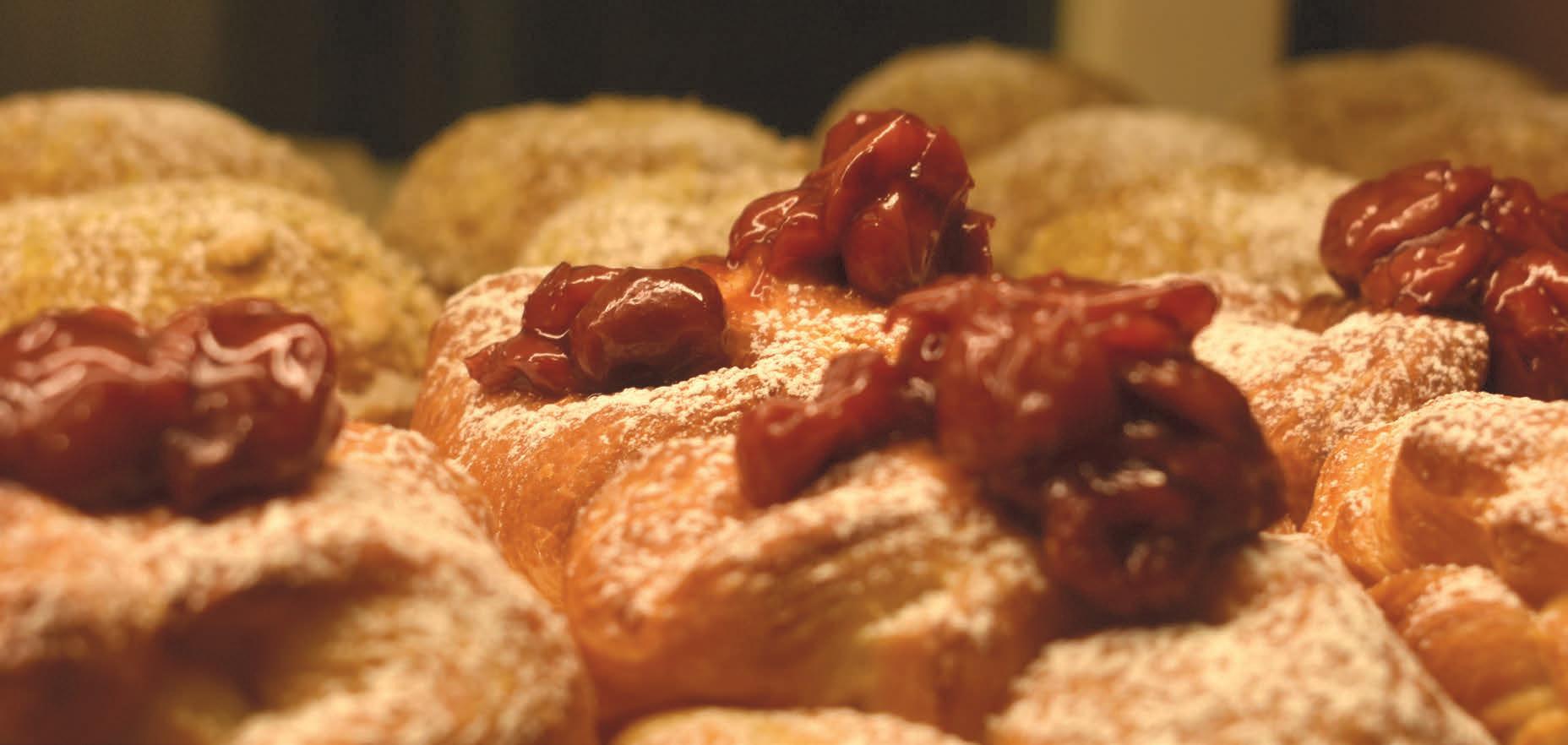

Fresh Culinary Creations to Gamecocks Daily!
With over 30 locations on campus, there is always something going on.
Serving
SHOULD THE ARTS AND SCIENCES BE SEPARATED?

 BY JORDAN SMITH • DESIGN AND ILLUSTRATION BY MEREDITH PRICE
BY JORDAN SMITH • DESIGN AND ILLUSTRATION BY MEREDITH PRICE

Nothing worthwhile ever happens in a vacuum. The cultural, social and artistic climate we inhabit is a result of the osmosis of opposite forces – behind every movement of art is an equally impactful scientific or sociological enlightenment. The great modernist movement would perhaps not have taken shape without the social uncertainty cast by the Communist Manifesto. Naturalist painting would not have been a reality without the mathematical development of linear perspective by Filippo Brunelleschi. Apple, the epitome of science, technology, engineering and math (STEM) innovation, based its elegant, functional designs on the Bauhaus design school and movement. Each of these advancements relied on an integration of STEM and artistic knowledge, but there seems to be a disconnect between the two fields at the university level.
“Any arts student will probably tell you the same thing,” said Jessie Ary, a fourth-year media arts student, “STEM students are very vocal about thinking that art majors don’t have to do any real work, or that it’s something everybody can do.”
This perceived judgment is most likely rooted in our secondary education – a traditional core curriculum revolves around math, science, English and language arts. Studio art, music and drama classes are electives, and their existence is often contingent on funding.
But not every STEM student is as critical as perceived. Jamie Kase, a second-year chemical engineering student, actually envies art students for the ability to use their creativity constantly. “Engineering requires a lot of time, effort, attention to detail and creativity,” she said. “After using so much of our left brain on a daily basis, I know it would be beneficial if we used these characteristics in more of a right
brain manner to balance out our course load and stress levels.”
Jamie isn’t the only one that thinks this – hundreds of studies have shown that integrated arts programs not only improve test scores, but decrease disciplinary issues and increase graduation rates.
While the positive effects of integration are undeniable, the arts shouldn’t be seen just for their utilitarian value. Justifying their inclusion based on their effects on test scores rather than their holistic and individual value does both arts and STEM students a disservice.
“This is why some STEM student have it all wrong,” Ary added. “In the arts you have to appeal to an audience and deal with rejection. Jobs aren’t guaranteed, so for my personal skillset a major in STEM would be an easy way out.”
Luis Rodriguez, a third-year computer science major agrees. “Arts are a skill just like anything else,” he said. “Everyone has different interests and abilities; I just happen to love math.”
Despite varying interests and skills, students seem to agree that they benefit from a more integrated curriculum – this is why some schools and universities now have STEAM programs, with an added A for “arts.” USC may not be there yet, but in the meantime, students like Kase and Rodriguez encourage their peers to try a class in the arts.
Although science and art seem to be on opposite ends of the academic spectrum, in actuality, they couldn’t be closer. Both fields are attempting to describe or interpret the world around us, and both require outside influences to be successful in doing so. Cultural advancement is historically brought to us through a delicate synergy of industrial advancement and artistic imagination. Neither art nor science are completely selfsufficient, and our curriculum may better serve its students if it reflected this.
44 FULL STEAM AHEAD

HOW TO 45
On top of a parking garage with Homemade Haircuts BY NICOLE KITCHENS • PHOTOS BY ALYSSA WILLEY • DESIGN BY KATIE SLACK
After waiting on top of the parking garage for nearly 15 minutes, a sunset barely forming amidst dark clouds on the Columbia skyline, a Jeep pulls up and parks. Almost as soon as Rob Magee and Evan Delp step out of the vehicle, skateboard and guitar case in respective hands, their vision for the photoshoot is set straight.
“What if we did, like, some shots in this stairwell? Could we get a light in here?”
“Could you get one of us climbing up on this barrier?”
It’s a fitting attitude for a band set up as straightforward as Homemade Haircuts, a group that was formulated years in advance of their debut EP, “Hold the Door.”

“I actually met Evan during our senior year of high school,” Magee explains, describing how he and his fellow USC sophomore
and band member crossed paths. The idea of starting a band began with the two mentioning their musical abilities ... or lack thereof, in Magee’s case.
“He was saying how he kind of played guitar,” says Magee.
Delp interrupts, “And you told me you played the bass.”
“I said I have a bass...” Magee pauses, a smile forming, “and I didn’t say anything else.”
“It’s funny, because what I heard was you saying, ‘Yeah, I’m really good at the bass.’”
Both were accepted to USC, and Magee spent the fall teaching himself how to play the guitar. In spring they found themselves in some of the same classes, sitting together and scribbling lyrics and ideas onto their class notes.
“We toyed with the idea of starting a
band during the spring,” Delp says. “But it didn’t really become a reality until we actually started finishing songs. So this past fall was when we really started to turn it into something – figuring out that we actually want to play shows and record music.”
The majority of the songs from “Hold the Door” were written during the end of their freshman year.
“I flew up to Philly after Christmas and we recorded the whole EP in like, 10 days in his room,” Magee explains.
Although Delp hails from more of an acoustic, singer-songwriter background and Magee relates more to groups like Cage the Elephant and Vampire Weekend, the two are able to connect on different levels to musicians who record music in DIY settings.
“Translating into the EP are these different
46 CHANGE OF WEATHER
indie-rock, singer-songwriter backgrounds, like those are the songs that we listen to. But when I listen to bedroom pop, I think that it’s taking notes on production technique rather than just listening to the music itself,” Magee says.

The EP is made up of five songs, each with their own raw sense of self-discovery. According to the band, it’s better to listen to all five in order to get the real idea behind the record: the nostalgia and triumph that comes along with getting to a better emotional place in life.
“I think ‘Spring Cleaning,’ the ending song, kind of answers the questions and concerns that are brought up in the first song, ‘Carsick.’” Magee says.
“But if you’re gonna listen to one and not listen to the rest, then definitely ‘Weather,’” Delp adds. He pauses for a minute and looks over his shoulder at the sun, which is now peeking over the top of what looks like, quite

fittingly, a storm cloud; a sudden change of weather, just like the song’s lyrics suggest.
A plane flies over us as they answer the typical, “What do you want to see come out of this project?” question. The engines are loud, adding an ominous air to the end of the interview.
It’s the first time that they don’t seem 100 percent straightforward. Magee and Delp are both studying abroad next year, completely unsure of what’s to come of the group. The one thing they are sure of is a change of scenery, hoping that it provides experiences to heighten song lyrics and subsequently a follow-up record, with higher quality sound, coming as soon as they get back home.
Neither seem worried about the effect of their trips abroad on the group, and honestly I don’t feel worried either. It’s merely a brief change of weather.
“the nostalgia and triumph that comes along with getting to a better emotional place in life”
CHANGE OF WEATHER 47









 BY SARAH NICHOLS
BY SARAH NICHOLS






 BY MARY-BRYANT CHARLES • PHOTOS BY COLEMAN ROJAHN DESIGN BY GRACIE NEWTON
BY MARY-BRYANT CHARLES • PHOTOS BY COLEMAN ROJAHN DESIGN BY GRACIE NEWTON




 BY HALLIE HAYES • PHOTO COURTESY OF JASPER MAGAZINE DESIGN AND ILLUSTRATION BY GRACIE NEWTON
BY HALLIE HAYES • PHOTO COURTESY OF JASPER MAGAZINE DESIGN AND ILLUSTRATION BY GRACIE NEWTON




 BY JENNA SCHIFERL
PHOTOS BY AWA DIA DESIGN BY EMILY SCHOONOVER
BY JENNA SCHIFERL
PHOTOS BY AWA DIA DESIGN BY EMILY SCHOONOVER





 LOOK ONE: Royal Blue Romper, Fab’rik, $68 | Gold Shell Necklace, Vestique, $28 Gold Plated Necklace, Vestique, $22 | Gold Earrings, Vestique, $15
LOOK ONE: Royal Blue Romper, Fab’rik, $68 | Gold Shell Necklace, Vestique, $28 Gold Plated Necklace, Vestique, $22 | Gold Earrings, Vestique, $15
 STYLED BY CAROLINE HART • STYLE ASSISTANT: JASMINE WHITE PHOTOS BY ALYSSA WILLEY & COLEMAN ROJAHN • DESIGNED BY GRACE STEPTOE MODEL: BRITNEY ANN WILSON
STYLED BY CAROLINE HART • STYLE ASSISTANT: JASMINE WHITE PHOTOS BY ALYSSA WILLEY & COLEMAN ROJAHN • DESIGNED BY GRACE STEPTOE MODEL: BRITNEY ANN WILSON





 LOOK TWO: Silver Sequined Dress, Fab’rik, $68 Silver & White Earrings, Fab’rik, $32 White Western Belt, H&M
LOOK TWO: Silver Sequined Dress, Fab’rik, $68 Silver & White Earrings, Fab’rik, $32 White Western Belt, H&M

 LOOK THREE: White Eyelet Top, Wildflower, $48 | Desert Yellow Shorts, Vestique, $38 Shell Necklace, Vestique, $16 | Cheetah Diamond Earrings, Fab’rik, $18
LOOK THREE: White Eyelet Top, Wildflower, $48 | Desert Yellow Shorts, Vestique, $38 Shell Necklace, Vestique, $16 | Cheetah Diamond Earrings, Fab’rik, $18





 LOOK FOUR: Blue Knit Crop Top, Vestique, $32 Wide Leg Pants, Vestique, $32 Blue Sunglasses, Wildflower, $15
LOOK FOUR: Blue Knit Crop Top, Vestique, $32 Wide Leg Pants, Vestique, $32 Blue Sunglasses, Wildflower, $15
 LOOK FIVE: White Knit Slit Dress, Fab’rik, $78 | Metallic Flower Shirt, Wildflower, $48 Silk Scarf, Wildflower, $10 | White & Gold Earrings, Fab’rik, $18
LOOK FIVE: White Knit Slit Dress, Fab’rik, $78 | Metallic Flower Shirt, Wildflower, $48 Silk Scarf, Wildflower, $10 | White & Gold Earrings, Fab’rik, $18

 BY ROSE STEPTOE • PHOTOS BY ALYSSA WILLEY
DESIGN BY EMILY SCHOONOVER
BY ROSE STEPTOE • PHOTOS BY ALYSSA WILLEY
DESIGN BY EMILY SCHOONOVER











